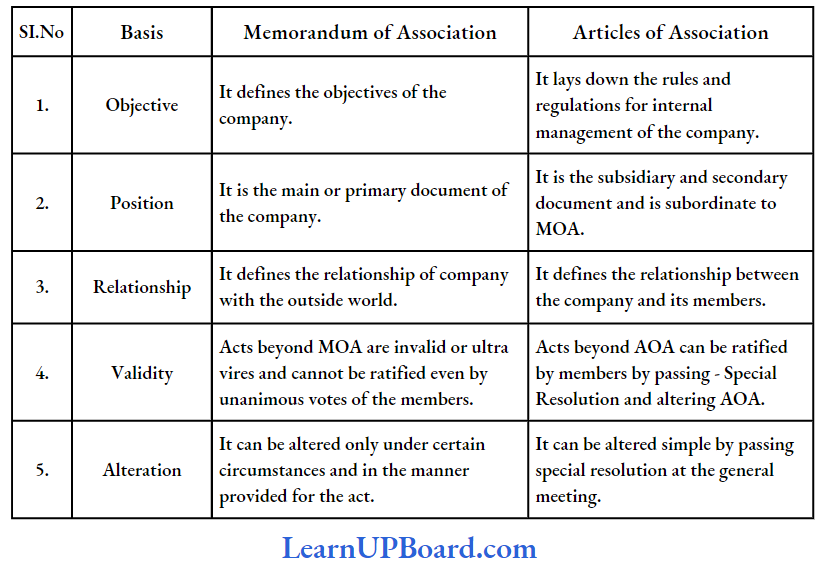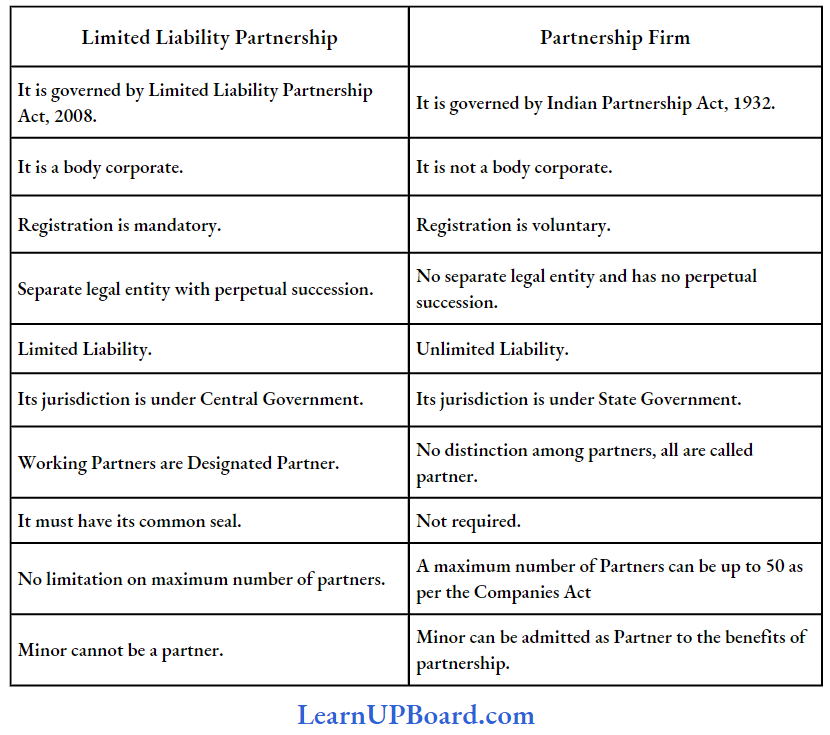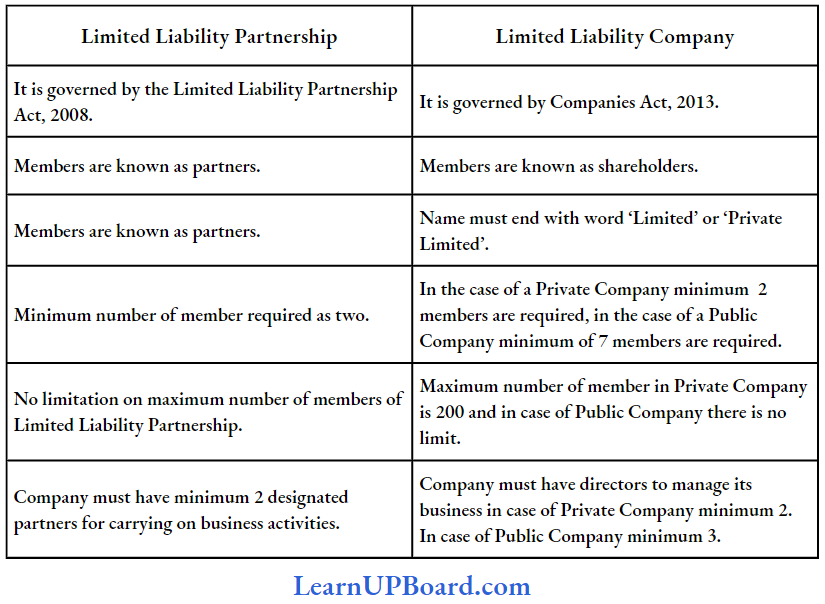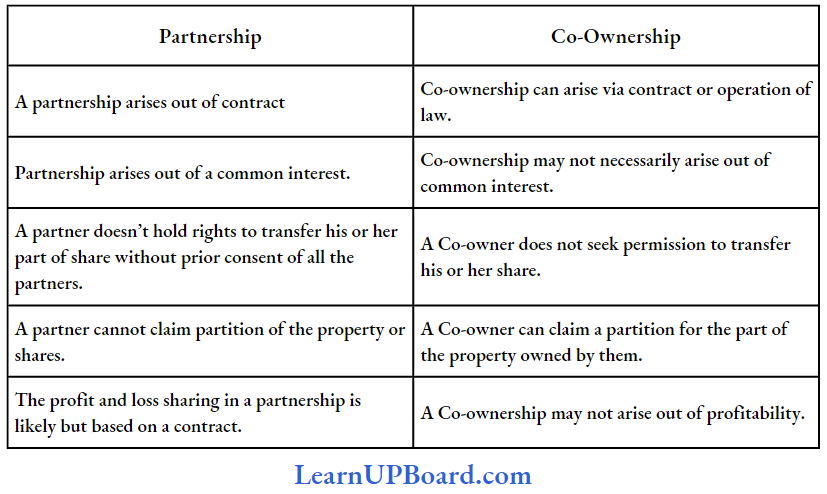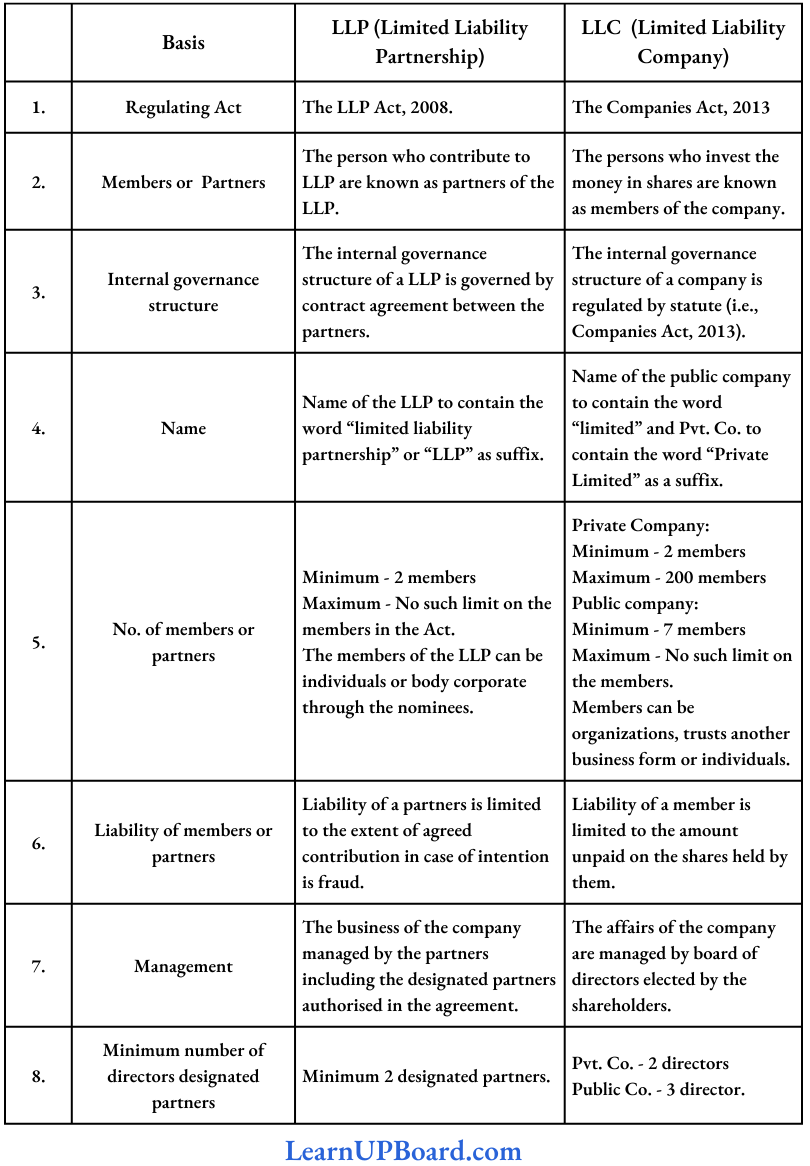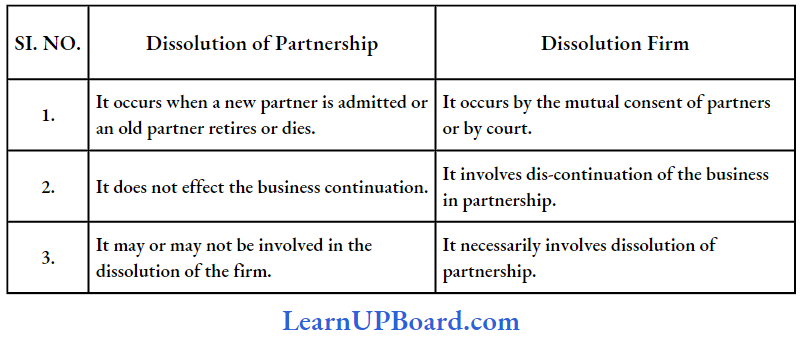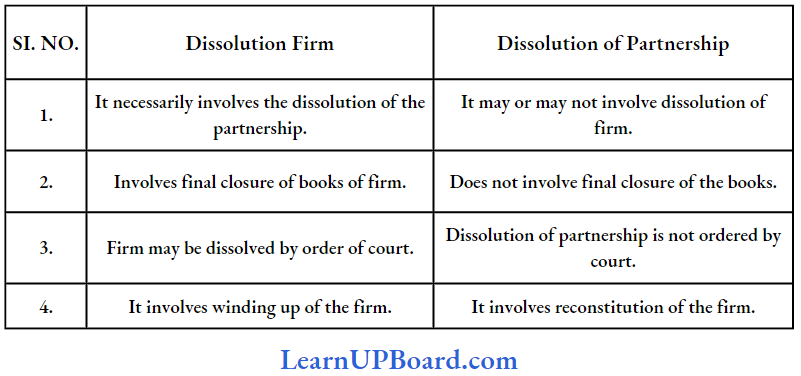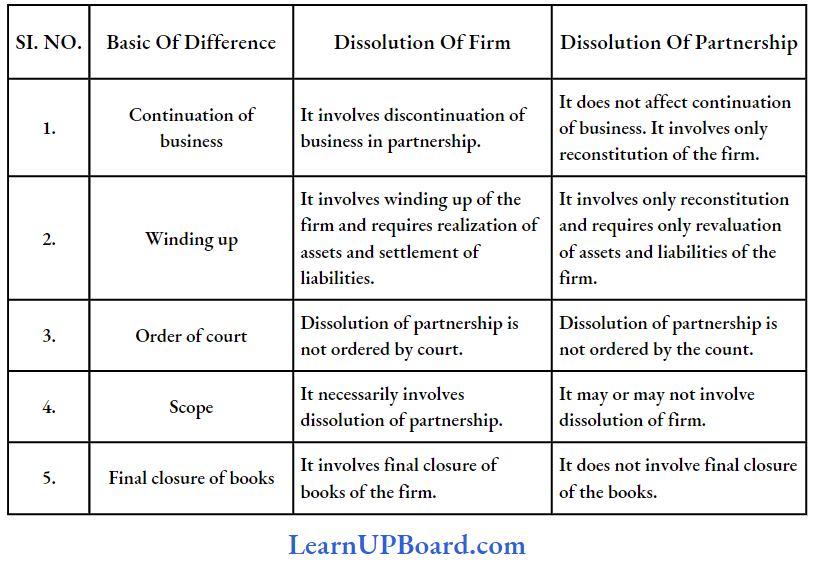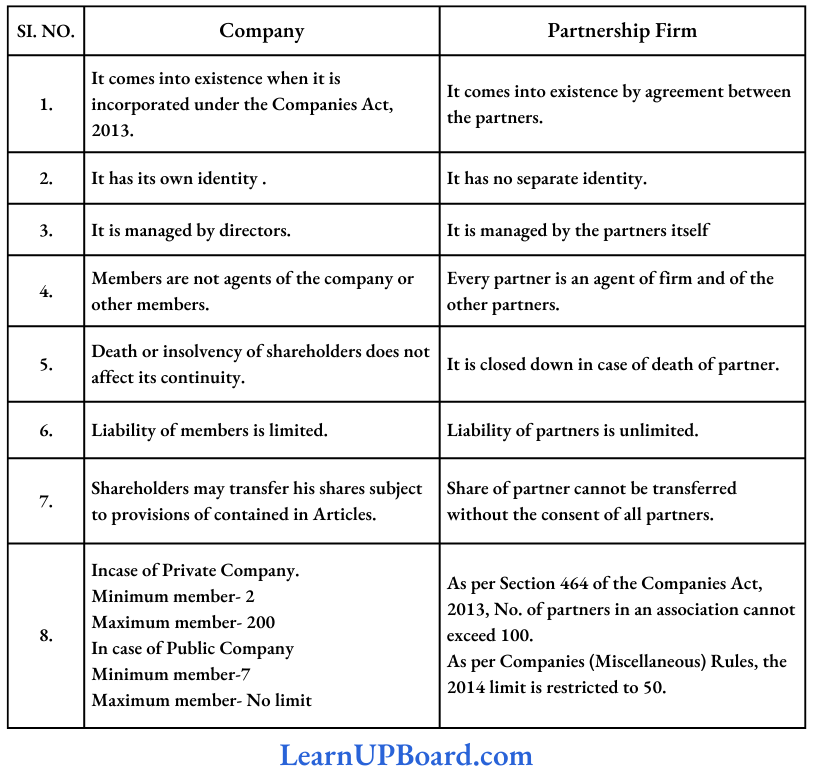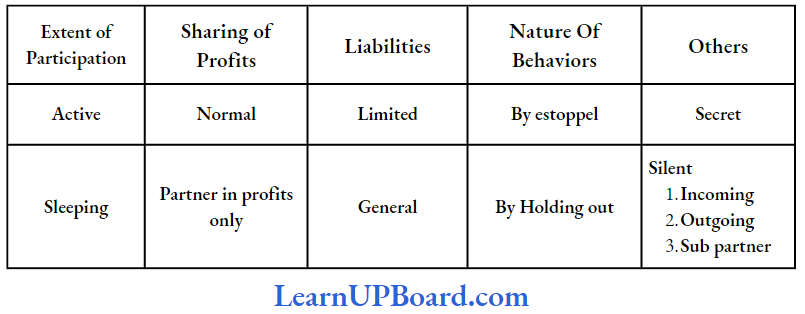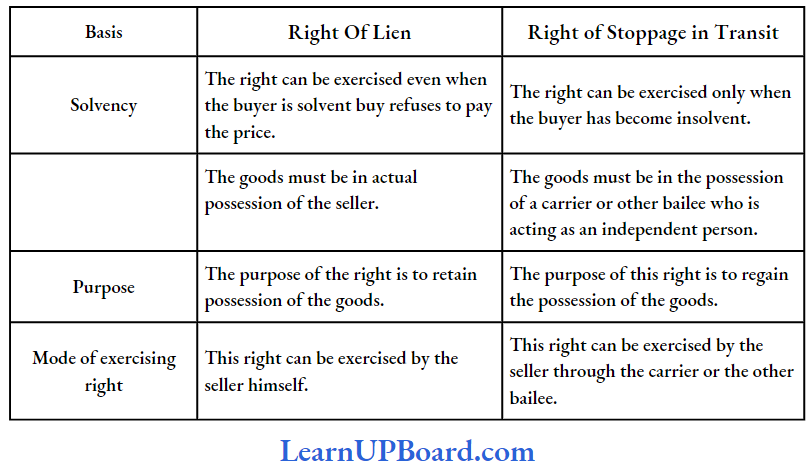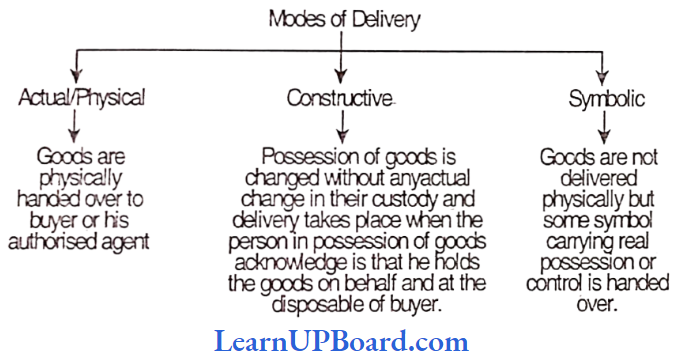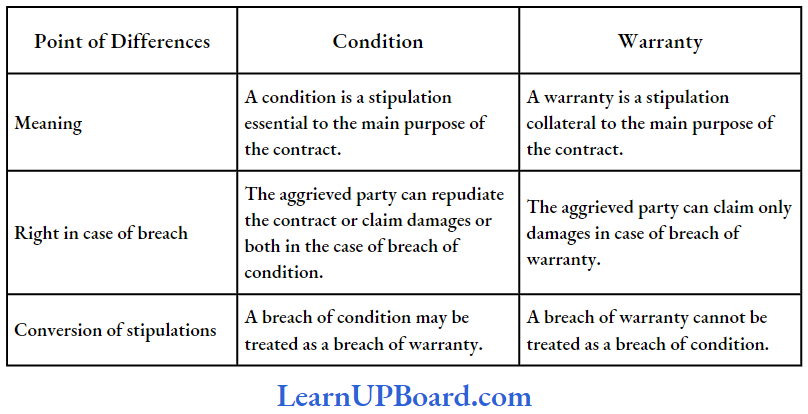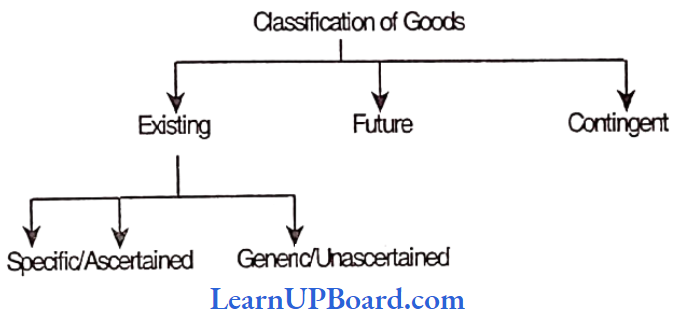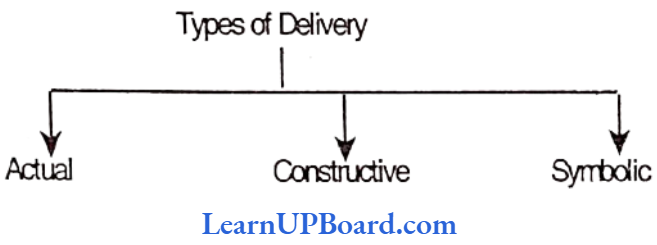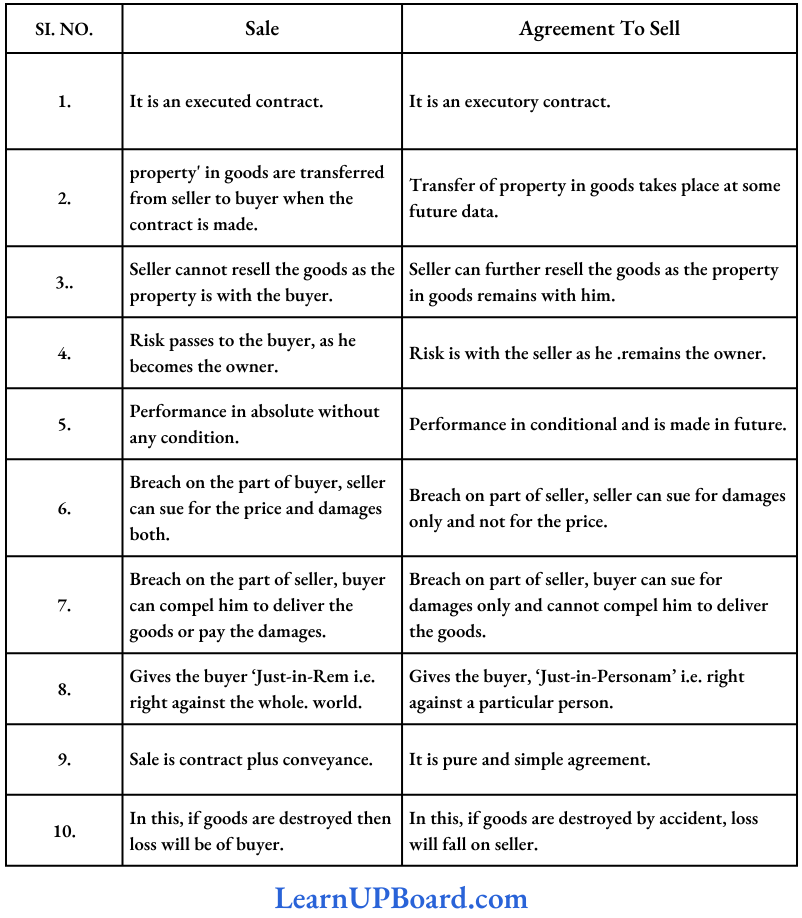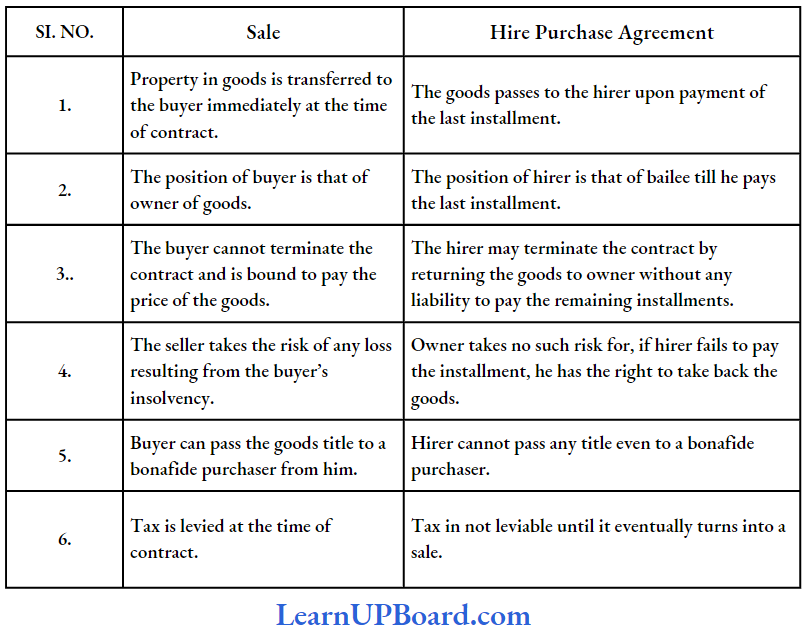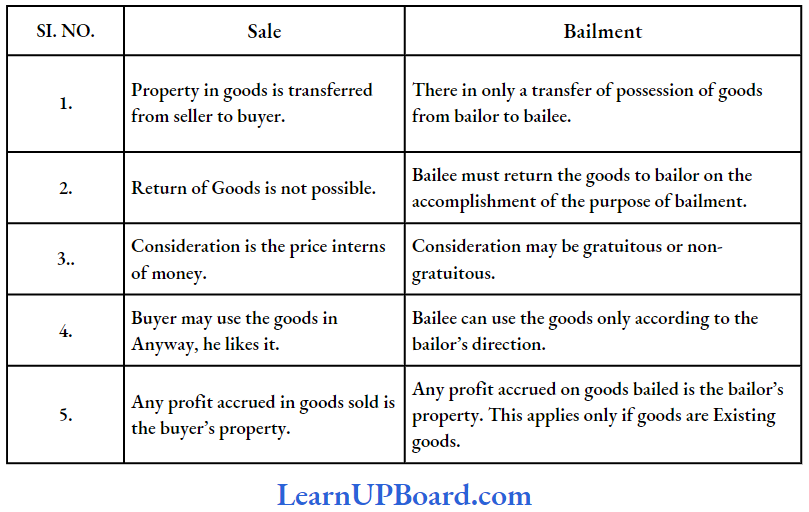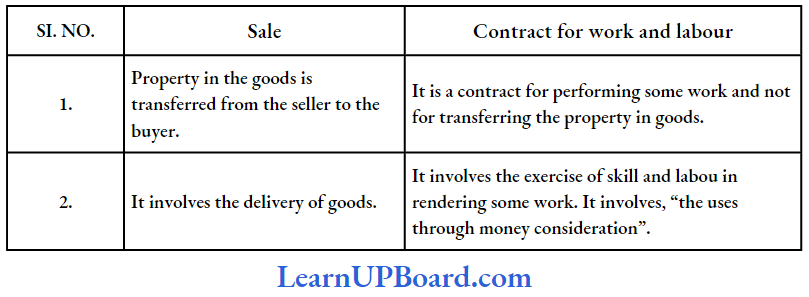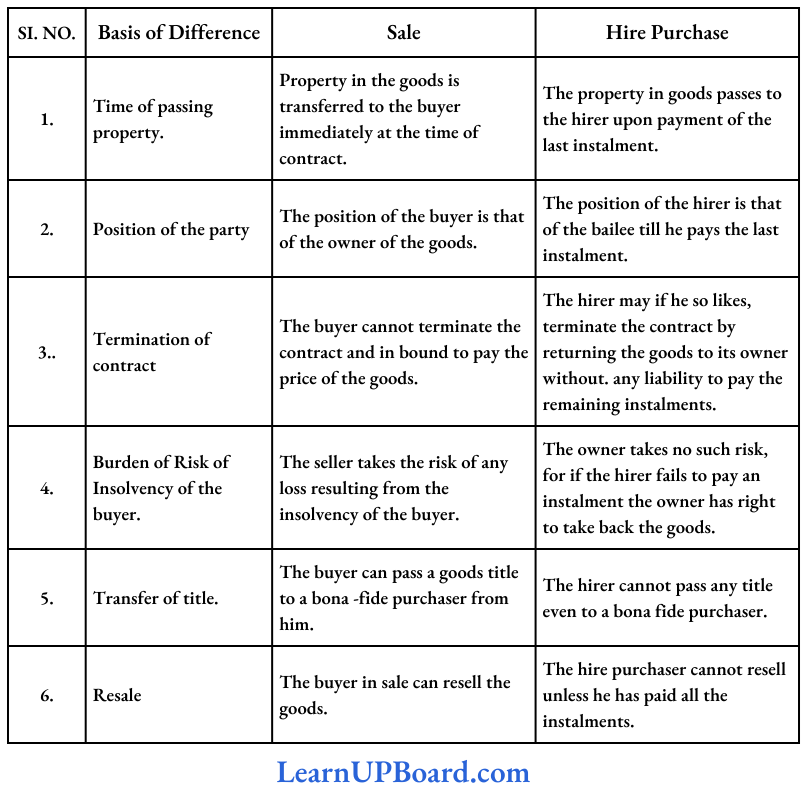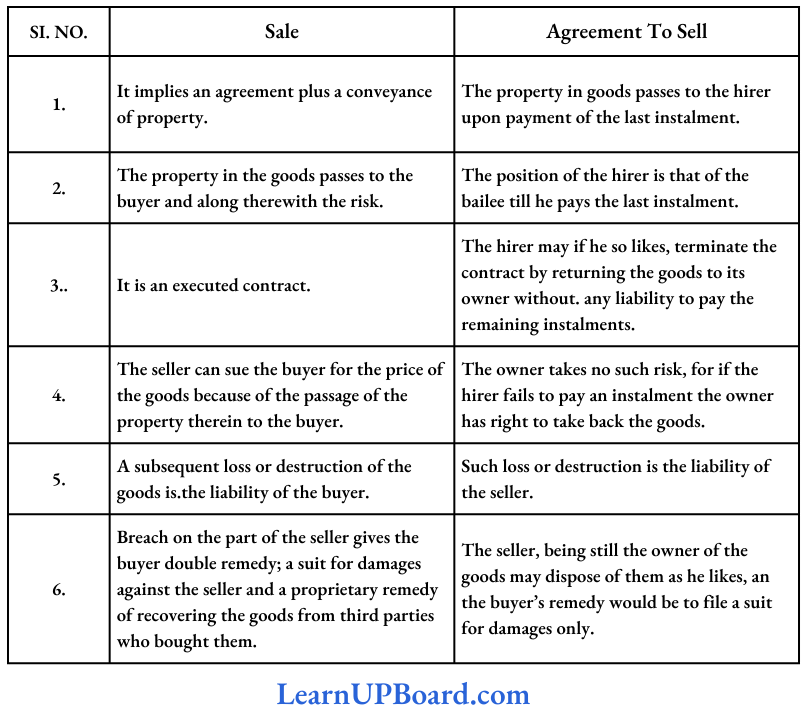CA Foundation Solutions For Business Laws The Negotiable Instruments Act 1881 Multiple Choice Questions And Answers
Question 1. The Negotiable Instruments Act came into force on the _________
- 1.1.1881
- 1.2.1881
- 1.3.1882
- 1.12.1981
Answer: 3. 1.3.1882
Question 2. The Negotiable Instruments Act, of 1881 extends to the _________
- The whole of India excluding the State of Jammu
- The whole of India excluding State of Jammu and Kashmir
- Whole of India
- The whole of India excluding the State of Goa?
Answer: 3. Whole of India
Question 3. The Negotiable Instruments Act, of 1881 relates to the law relating to _______
- Promissory notes
- Bills of exchange
- Cheques
- All of above
Answer: 4. All of the above
Question 4. It was inserted into the Negotiable Instruments Act, of 1881, by amendment of the Act, in the year
- 1888
- 1988
- 1998
- None of the above
Answer: 2. 1988
Question 5. It contains sections
- 138 to 142
- 136 to 1 42
- 112 to 124
- None of the above.
Answer: 4. None of the above.
Question 6. With effect from which date, the term of imprisonment under Section 138 was increased to two years from one year?
- From 6-2-2002
- From 6-2-2003
- From 1-4-1989
- None of the above
Answer: 2. From 6-2-2003
Question 7. The term ‘Negotiable instrument’ is defined in the Negotiable Instruments Act, of 1881, under section
- 12
- 13
- 13A
- 13B
Answer: 2. 13
Question 8. Section 13 of ‘Negotiable Instruments Act, 188T mentions which kind of instrument
- Bill of exchange
- Promissory note
- Cheque
- All of the above.
Answer: 4. All of the above.
Question 9. The term ‘negotiation’ in section 14 of the Negotiable Instruments Act, of 1881 refers to
- The transfer of a bill of exchange, promissory note or cheque to any person, to constitute the person the holder thereof
- The payment by a bank on a negotiable instrument after due verification of the instrument
- The bargaining between the parties to a negotiable instrument
- All of the above
Answer: 1. The transfer of a bill of exchange, promissory note or cheque to any person, to constitute the person the holder thereof
Question 10. Cheque is a
- Promissory note
- Bill of exchange
- Both (1) and (2) above
- None of the above.
Answer: 2. Bill of exchange
Question 11. If an instrument may be construed either as a promissory note or bill of exchange, it is
- A valid instruments
- An ambiguous instrument
- A returnable instrument
- None of the above.
Answer: 2. An ambiguous instrument
Question 12. Which of the following can be considered as characteristics of Negotiable Instruments?
- The holder of the instruments is presumed to be the owner.
- They are not freely transferable.
- They are transferable subject to restriction.
- Both (2) or (3)
Answer: 1. The holder of the instruments is presumed to be the owner.
Question 13. If in an instrument the amount undertaken or ordered to be paid is stated differently in figures and in words
- The instrument is void due to uncertainty
- The amount stated in the figure shall be the amount undertaken or ordered to be paid
- The amount stated in words shall be the amount undertaken or ordered to be paid
- None of the above.
Answer: 3. The amount stated in words shall be the amount undertaken or ordered to be paid
Question 14. Which of the following can be considered as characteristics of Negotiable Instruments?
- The holder in due course is entitled to sue on the instrument in his name.
- The instrument is transferable till maturity and in the case of cheques, it becomes stale.
- Both (1) and (2).
- None of the above
Answer: 3. Both (1) and (2).
Question 15. Under Section 16 of the Negotiable Instrument Act, ‘indorsement in blank’ of an instrument means
- Where the indorser does not write anything on the instrument
- Where the indorser signs his name only on the instrument
- Where the indorser writes the name of the person who is directed to pay
- None of the above
Answer: 2. Where the indorser signs his name only on the instrument
Question 16. Which of the following can NOT be considered as characteristics of Negotiable Instruments?
- The holder of the instrument is not presumed to be the owner.
- They are conditionally transferable
- A holder in due course is entitled to sue on the instrument in his name.
- Both (1) and (2)
Answer: 4. Both (1) and (2)
Question 17. ‘At sight’ under Section 21 of the Negotiable Instrument Act, of 1881, means
- On presentation
- On-demand
- On coming into vision
- None of the above.
Answer: 2. On demand
Question 18. Which of the following can NOT be considered as characteristics of Negotiable Instruments?
- A holder does not get the instrument free from all defects of the title of any previous holder.
- The instruments are transferable till maturity
- They are freely transferable.
- All of above
Answer: 1. A holder does not get the instrument free from all defects of the title of any previous holder.
Question 19. The undertaking contained in a promissory note, to pay a certain sum of money is
- Conditional
- Unconditional
- Maybe conditional or unconditional depending upon the circumstances
- None of the above.
Answer: 2. Unconditional
Question 20. A negotiable instrument is freely transferable.
- No
- Yes
- Partly yes
- None of the above
Answer: 2. Yes
Question 21. A bill of exchange contains an
- Unconditional undertaking
- Unconditional order
- Conditional undertaking
- Conditional order.
Answer: 2. Unconditional order
Question 22. A promissory note or bill exchange which is not expressed to be payable on demand, at sight or on presentment is at maturity
- On the 30th day after the day on which it was expressed to be payable
- On the 3rd day after the day on which it is expressed to be payable
- On the 5th day after the day on which it is expressed to be payable
- On the 4th day after the day on which it is expressed to be payable.
Answer: 2. On the 3rd day after the day on which it is expressed to be payable
Question 23. Which of the following is a valid promissory note
- “I promise to pay B or order ₹ 500″
- “ Mr. B. I owe your ₹ 500.00″
- “I promise to pay B ₹ 500.00 when he is twenty-one years old
- “I promise to pay B ₹ 500 and all other sums which shall be due to him”
- “I acknowledge myself to be indebted to B in 1,000 to be paid on demand for value received.
- 1, 2 and 5
- 1, 3 and 5 only
- 1 and 5 only
- All of the above statements are valid.
Answer: 3. 1 and 5 only
Question 24. ‘Promissory Note’ is defined under
- Section 2 of the NI Act
- Section 3 of Nl Act
- Section 4 of the NI Act
- Section 5 of the NI Act
Answer: 3. Section 4 of the NI Act
Question 25. A ‘bill of exchange’ is defined under
- Section 4 of Nl Act
- Section 5 of Nl Act
- Section 6 of Nl Act
- Section 2 of Nl Act
Answer: 2. Section 5 of Nl Act
Question 26. The undertaking contained in a promissory note, to pay a certain sum of money is
- Conditional
- Unconditional
- Either (1) or (2), depending upon the circumstances
- None of the above
Answer: 2. Unconditional
Question 27. A promissory note or bill of exchange which is not expressed to be payable on demand, at sight or on presentment is at maturity
- On the 30th day after the day on which it is expressed to be payable
- On the 6th day after the day on which it is expressed to be payable
- On the 15th day after the day on which it is expressed to be payable.
- On 3rd day after the day on which it is expressed to be payable.
Answer: 4. On 3rd day after the day on which it is expressed to be payable.
Question 28. In a promissory note the amount of money payable
- Is usually uncertain
- Must be certain
- May be certain or uncertain
- Both (1) and (3) above are true
Answer: 2. Must be certain
Question 29. An authority to draw a bill of exchange
- Itself imports an authority to endorse
- Does not itself import an authority to endorse
- Sometimes an authority endorse
- None of the above
Answer: 2. Does not itself import an authority to endorse
Question 30. In a promissory note, the promise to pay
- Must be express
- May be implied also
- May be implied or express
- Both (2) and (3)
Answer: 1. Must be express
Question 31. ‘Cheque’ is defined under
- Section 2 of Nl Act
- Section 4 of Nl Act
- Section 5 of the NI Act
- Section 6 of the NI Act
Answer: 4. Section 6 of the NI Act
Question 32. Promise to pay in a Promissory Note must be in respect of
- Money consideration only
- Other than money
- Both money and some other consideration
- None of the above.
Answer: 1. Money consideration only
Question 33. In a negotiable instrument, where the amount is stated differently in words and figures
- The amount stated in the figures shall be the amount undertaken
- The amount stated in words shall be the amount undertaken
- A larger amount shall be the amount undertaken
- The instrument is void due to uncertainty
Answer: 2. Amount stated in words shall be the amount undertaken
Question 34. The term “a cheque in the electronic form’’ is defined in the Negotiable Instruments Act, of 1881 under
- Section 6(a)
- Section 6(2)(a)
- Explanation 1 of Section 6
- Section 6A.
Answer: 3. Explanation 1 of Section 6
Question 35. A cheque is a
- Promissory note
- Bill of exchange
- Both (1) and (2) above
- None of the above.
Answer: 2. Bill of exchange
Question 36. If a minor draws indorse, delivers or negotiates an instrument, such instrument binds
- All parties to the instrument including the minor
- Only the minor and not other parties to the instrument
- All parties to the instrument except the minor
- None of the above.
Answer: 3. All parties to the instrument except the minor
Question 37. Dishonour by non-acceptance takes place
- When the bill is properly presented for acceptance, except where presentment is excused, but the drawee makes the default in accepting it
- When the bill is properly presented for acceptance, except where presentment is excused, but the drawee makes the default in paying it
- When the bill is properly presented for payment, except where presentment is excused, but the drawee fails to accept it
- None of the above
Answer: 1. When the bill is properly presented for acceptance, except where presentment is excused, but the drawee makes the default in accepting it
Question 38. An authority to draw bills of exchange.
- Itself imports an authority to endorse
- Does not itself import an authority to endorse
- Sometimes an authority endorse
- None of the above.
Answer: 2. Does not itself import an authority to endorse
Question 39. Where a cheque is crossed generally the banker on whom it is drawn
- Shall not pay it otherwise than to a banker
- Shall not pay it otherwise than to the holder
- Shall not pay it to a banker
- None of the above.
Answer: 1. Shall not pay it otherwise than to a banker
Question 40. The term ‘legal representative’ in Section 29 of the Negotiable Instruments Act, 1881
- Does not include executors or administrators (Rama v. Pravin, air 1926 mad 389)
- Includes executors or administrators (k. Subbanna v.k. Subbarayudu, air 1926 mad 390)
- Includes executors but does not include administrators (p. Nayar v.t. Ramann, an air 1929 mad 389).
- Includes only administrators but does not include executors (p.k. Pati v. Damodar Sahu, AIR 1 953 Ori 179).
Answer: 2. Includes executors or administrator (k. Subbanna v.k. Subbarayudu, air 1926 mad 390)
Question 41. Under the Negotiable Instrument Act, of 1881, an instrument writing containing an unconditional order signed by the maker, to pay a certain sum of money only to, or to the order of, a certain person or to the bearer of the instrument is a
- Promissory Note
- Bill of Exchange
- Currency Note
- Truncated Cheque.
Answer: 1. Promissory Note
Question 42. Can a drawer escape from his liability?
- No, a drawer can never escape from his liability
- Yes, a drawer can limit or exclude his liability by inserting in the bill an express stipulation to that effect.
- In certain cases, although he can escape from his liability but always he cannot escape
- None of the above.
Answer: 2. Yes, a drawer can limit or exclude his liability by inserting in the bill an express stipulation to that effect.
Question 43. If the words “not negotiable” are used with a special crossing in a cheque, the cheque is
- Not transferable
- Transferable
- Negotiable under certain circumstances
- None of the above.
Answer: 2. Transferable
Question 44. Crossing or a cheque affects the
- Negotiability of the cheque
- Mode of payment on the cheque
- Both (1) and (2)
- None of the above.
Answer: 2. Mode of payment on the cheque
Question 45. Who among the following cannot cross a cheque?
- Drawer
- Holder
- Banker
- All of the above
Answer: 3. Banker
Question 46. A bill is drawn payable to ‘A’ or order. ‘A’ indorses it to ‘B’ the indorsement not containing the words “or order” or any equivalent words. Can ‘B’ negotiate the instrument?
- Yes
- No
- Not always
- None of the above.
Answer: 1. Yes
Question 47. Where an indorser of an instrument excludes his liability and afterwards becomes the holder of the instrument, who is liable to him?
- No one is liable to him
- All intermediate indorsers are liable to him
- Only the immediate prior indorser is liable to him
- None of the above.
Answer: 2. All intermediate indorsers are liable to him
Question 48. Can the legal representative of a deceased person negotiate a promissory note, bill of exchange or cheque payable to order by delivery only which was endorsed by the deceased but not delivered by him?
- Yes, the legal representative can negotiate the instrument by delivery only
- No, the legal representative can not negotiate an instrument by delivery only. He must re-indorse and deliver the instrument for negotiating it
- An instrument indorsed by a deceased person has no legal validity and is void
- None of the above
Answer: 2. No, the legal representative can not negotiate an instrument by delivery only. He must re-indorse and deliver the instrument for negotiating it
Question 49. Can the holder of a negotiable instrument indorsed in blank convert the indorsement into an indorsement in full?
- No, such a conversion is not possible under the Negotiable Instruments Act, of 1881
- Yes, the holder can, without singing his name, and by writing above the indorser’s signature a direction to pay to any other person as indorsee, convert the indorsement in blank into an indorsement in full (section 49)
- Yes the holders can by signing their name and by writing above the indorser’s signature a direction to pay to any other person as indorsee, convert the indorsement in blank to an indorsement in full (section 49)
- None of the above.
Answer: 2. Yes, the holder can, without singing his name, and by writing above the indorser’s signature a direction to pay to any other person as indorsee, convert the indorsement in blank into an indorsement in full (section 49)
Question 50. The endorsement of a negotiable instrument followed by delivery
- Transfers to the indorsee the property in the bill provided the indorsement must be an indorsement in full
- Do not transfer the property in the bill to anyone
- Transfers to the indorsee the property in full ________?
- None of the above
Answer: 3. Transfers to the indorsee the property in full ________?
Question 51. A negotiable instrument may be transferred by __________
- Negotiation
- Assignment
- Negotiation or assignment
- Delivery
Answer: 3. Negotiation or assignment
Question 52. _________ is the transfer of an instrument a note, bill or cheque from one person to another in such a manner as to convey title and to constitute the transferee the holder thereof.
- Negotiation
- Assignment
- Delivery
- Sale
Answer: 2. Assignment
Question 53. In case of assignment, there is a transfer of ownership through a _______ document.
- Written
- Registered
- Written and registered
- Stamped
Answer: 3. Written and registered
Question 54. When presentment for payment is to be made under Section 65 of the Act?
- Presentment for payment can be made at any reasonable time.
- Presentment for payment must be made during the usual hours of business and, if at a banker’s within the banking house.
- There is no such stipulation on the time for presentment.
- None of the above.
Answer: 2. Presentment for payment must be made during the usual hours of business and, if at a banker’s within the banking house.
Question 55. In determining the reasonable time for payment of a negotiable instrument
- Public holidays are included
- Public holidays are excluded
- Only the holidays observed by the banks are excluded
- None of the above.
Answer: 2. Public holidays are excluded
Question 56. The question of the reasonableness of the time for presenting a bill of exchange for payment is a
- Question of law
- Question of fact
- A mixed question of law and fact
- None of the above.
Answer: 3. Mixed question of law and fact
Question 57. When the acceptor of an Instrument is also a drawer, notice of dishonour is
- Necessary [section 98a]
- Not necessary [section 98 (c)]
- Not always necessary but under certain circumstances mentioned in section 98a, of the act, it is a must
- None of the above.
Answer: 2. Not necessary [section 98 (c)]
Question 58. Under Section 97, of the Negotiable Instruments Act, when the party to whom notice of dishonour is dispatched is dead, but the party dispatching the notice is ignorant of his death, the notice is
- Sufficient
- Not Sufficient
- Null and void and has no effect
- None of the above.
Answer: 1. Sufficient
Question 59. As per the provision of Section 93, when a cheque is dishonoured by non-acceptance or non-payment of the holder
- May or may not give notice to the parties whom the holder seeks to make liable thereon
- Must give notice to the parties whom the holder seeks to make
- Must give notice to the parties whom the holder such to make liable, but after noting
- Must not give any notice to anyone.
Answer: 2. Must be given notice to the parties whom the holder seeks to make
Question 60. A note under Section 99 of the Negotiable Instruments Act, should contain among other things
- Place of the notary
- Charges of notary
- Both (1) and (2)
- None of the above.
Answer: 2. Charges of notary
Question 61. A notice of protest under Section 1 02 of the Negotiable Instruments Act, 1881
- May be given by the notary public who makes the protest
- Must always be given by the notary public who makes the protest.
- Must be given by the holder
- None of the above.
Answer: 1. May be given by the notary public who makes the protest
Question 62. A protest must contain
- The name of the person for whom the instrument has been protested
- The name of the person against whom the instrument has been protested
- The instrument itself or its literal transcript
- All of the above.
Answer: 4. All of the above.
Question 63. A protest is made by
- By drawer
- The indorser
- A notary
- None of the above.
Answer: 3. A notary
Question 64. Under Section 118 of the Negotiable Instruments Act, of 1881, it is presumed, until the contrary is proved, that every transfer of a negotiable instrument was made
- After its maturity
- Before is maturity
- At its maturity
- None of the above.
Answer: 2. Before is maturity
Question 65. To whom of the following, payment of the amount due on a promissory note, bill of exchange or cheque must be made to discharge the maker or acceptor
- Holder of the instrument
- Indorser of the instrument
- Indorsee of the instrument
- None of the above.
Answer: 1. Holder of the instrument
Question 66. Under Section 118 of the Negotiable Instruments Act, the onus of proving the absence of consideration in the execution of a negotiable instrument is on the
- Indorser (zohra jan v. Rajan bibi, 28 ic 402)
- Executant (zohra jan v. Rajan bibi, 28 ic 402)
- Drawee (r.s. Rajeswara sethupathi v. Chidambaram chattier, air 1938 pc 123)
- None of the above.
Answer: 2. Executant (Zohra Jan v. Rajan Bibi, 28 ic 402)
Question 67. What is the presumption under Section 137 of the Negotiable Instruments Act, of 1881?
- A negotiable instrument drawn in a foreign country is genuine
- The law of any foreign country regarding promissory notes, bills of exchange and cheques is the same as that of India
- Both (1) and (2)
- None of the above.
Answer: 2. The law of any foreign country regarding promissory notes, bills of exchange and cheques is the same as that of India
Question 68. The presumption as to the date of a negotiable instrument under Section 118 is that every negotiable instrument bearing a date was made or drawn
- Before that date
- On such date
- Maybe on or before that date
- None of the above.
Answer: 2. On such a date
Question 69. As per Section 147 of the Negotiable Instruments Act, of 1881, every offence punishable under the Act, are
- Compoundable
- Un-compoundable
- Cognizable
- Both (2) and (3) above.
Answer: 3. Cognizable
Question 70. Under the provisions of Section 143 of the Negotiable Instruments Act, of 1881, all of the offences under the Act are to be tried by
- Any judicial magistrate
- Judicial magistrate of the first class or by metropolitan magistrate
- Only a district judge
- None of the above.
Answer: 2. Judicial magistrate of the first class or by metropolitan magistrate
Question 71. For what term of imprisonment an offender under Section 138 of the Negotiable Instruments Act, can be punished?
- For a term which may extend to two years
- For a term which may extend to one year
- For a term not exceeding three years
- None of the above.
Answer: 1. For a term which may extend to two years
Question 72. Section 138 of the Negotiable Instruments Act, 1881,
- Partially excludes
- Includes
- Sometime includes
- None of the above.
Answer: 1. Partially excludes
Question 73. To attract the provisions of Section 138 of the Negotiable Instruments Act, of 1881, a cheque has to be presented to the bank
- Within six months
- Within six months from the date on which it is drawn or within the period of its validity, whichever is earlier
- Within 15 days from the date on which it is drawn
- None of the above.
Answer: 2. Within six months from the date on which it is drawn or within the period of its validity, whichever is earlier
Question 74. Cognizance of an offence under Section 138 can be taken by a court only on an
- Police report (section 142)
- Complaint (Section 142)
- Application to the District Judge (Section 142)
- None of the above.
Answer: 2. Complaint (Section 142)
Question 75. Who should make a complaint to a court to take cognizance of an offence under Section 138?
- The payer or as the case may be, the holder in due course of the cheque
- Any person who is affected can make a complaint
- The payee with the written permission of the drawee
- None of the above.
Answer: 1. The payer or as the case may be, the holder in due course of the cheque
Question 76. A complaint against an offence under Section 138 of the Negotiable Instrument Act, 1881
- Must be in writing (section 142)
- May be oral or in writing (section 142)
- Must be in writing containing a declaration by the drawee that he consents to such filing of the complaint (section 142)
- None of the above
Answer: 1. Must be in writing (section 142)
Question 77. In the trial of an offence under Section 138 of the Negotiable Instruments Act, the provisions of Sections 262 to 265 of the Code of Criminal Procedure
- Shall apply (section 143)
- Shall not apply (section 143)
- Sometimes shall apply (section 143)
- None of the above.
Answer: 1. Shall apply (section 143)
Question 78. Under Section 143 of the Negotiable Instruments Act, an endeavour shall be made to conclude that trial within _________ months from the date of filing of the complaint.
- 9
- 3
- 6
- 12
Answer: 3. 6
Question 79. Can a ‘notice in writing envisaged in Section 138 of the Negotiable Instruments Act, 1881, be sent by telegraph?
- No (vraju v. P. Subbarama naidu, air 1931 mad 301)
- Yes [m. V. Muthuramlingam v. D. Narayanswamy, (1 995) 3 comp cas 77 mad]
- Yes [a.b. Steels v. Krishna finance, (1996) 86 comp cas 295 (mad)].
- None of the above.
Answer: 2. Yes [m. V. Muthuramlingam v. D. Narayanswamy, (1 995) 3 comp cas 77 mad]
Question 80. The provision of Section 147 of the Negotiable Instruments Act, 1881, that every offence punishable under this Act shall be compoundable was inserted by the
- Amending Act of 1988
- Amending act of1980
- Amending Act of 2002
- None of the above
Answer: 3. Amending Act of 2002
Question 81. The liability under Section 138 of the Negotiable Instruments Act, of 1881 is
- Strict liability
- Vicarious liability
- Both (1) and (2)
- None of the above.
Answer: 1. Strict liability
Question 82. A Magistrate issuing a summons to an accused or a witness can send it
- By speed post
- By courier services
- By a courier service as approved by a court of session
- Both (1) and (3).
Answer: 4. Both (1) and (3).
Question 83. Under Section 143 of the Nl Act, the trial shall be liable to conclude after the filing of a complaint within ________ period.
- 2 months
- 4 months
- 6 months
- 8 months.
Answer: 3. 6 months
Question 84. Offences under the Negotiable Instruments Act, are triable by
- Session Judge
- Judicial Magistrate 1st Class
- Judicial Magistrate 2nd Class
- High Court
Answer: 2. Judicial Magistrate 1st Class
Question 85. Which of the following is not a Negotiable Instrument
- Bill of Exchange
- Cheque
- Bond
- None of the above.
Answer: 3. Bond
Question 86. To rebut the presumption under Section 138 of the Nl Act, Accused.
- Must prove the absence of consideration by direct evidence
- Must prove absence of consideration beyond reasonable doubt and give evidence in defence
- Both (1) and (2)
- May rebut the principle of preponderance of probability.
Answer: 4. May rebut the principle of preponderance of probability.
CA Foundation Solutions For Business Laws The Negotiable Instruments Act 1881 Objective Questions And Answers
Question 1. State whether the following statement is correct or incorrect: A cheque marked “Not negotiable” is not transferable.
Answer:
incorrect: A cheque marked “not negotiable” is a transferable instrument. The inclusion of the words ‘not negotiable’ however makes a significant difference in the transferability of the cheques. The holder of such a cheque cannot acquire a title better than that of the transferor.
Question 2. State whether the following statement is correct or incorrect: A promissory note duly executed in favour of a minor is valid.
Answer:
Correct: As a minor’s agreement is void, he cannot bind himself by becoming a party to a negotiable instrument. But he may draw, endorse, deliver and negotiate such instruments to bind all parties except himself.
Question 3. State, giving reasons, whether the following statements are correct or incorrect
- In a Promissory Note, the promise to pay must be conditional.
- A Bill of Exchange may not be in writing.
Answer:
- Incorrect: The promise to pay must be definite but unconditional.
- Exception: A promise to pay is not conditional as it depends upon or even what is certain to happen but the time of its occurrence may be uncertain.
- Incorrect: The Bill of Exchange is an instrument in writing containing or unconditional order signed by the maker directing a certain person to pay a certain sum of money only to the order of a certain person or to the bearer of the instrument.
CA Foundation Solutions For Business Laws The Negotiable Instruments Act 1881 Descriptive Questions And Answers
Question 1. State the circumstances based on which a banker can dishonour a cheque under the provisions of the Negotiable Instruments Act, of 1881.
Answer:
Cases in which a banker is justified or bound to dishonour cheques :
- If a cheque is not dated’ or Griffth vs Delton (1940)].
- If the banker gets notice about the insolvency or lunacy of a customer.
- If it contains a material alteration, that is an irregular signature or endorsement.
- A banker is justified in refusing payment of a post-dated cheque presented for payment before its extensible date [Morley is Culverwell 7M and V/ 174,178].
- If the instrument is incomplete and not free from reasonable doubt.
- If notice in respect of closure of the account is served by either party on the other.
- If it is stated, that is if it has not been presented within a reasonable period.
- If the customer has credit with one branch of a bank and he draws a cheque from another branch of the same bank.in which either he has an account or his account is overdrawn [WoodLand vs. Fear (1857)].
- By notice of loss of cheque, a banker should not pay a cheque after receiving from the holder notice of its loss. 10 If the customer countermands the payment of cheque, the banker’s duty ceases for payment.
- If the authority of the banker to honour a cheque of his customer is determined by the notice of the latter’s death. Any payment made before. the receipt of the notice of death is valid.
- If the garnishee or other legal order from the court attaching or otherwise dealing with the money in the hand of the banker is served on the banker [Rogers V. Whitely (1892)]
Question 2. Explain the terms ‘Acceptance for Honour1 and ‘Drawee in case of need’ as used in the Negotiable Instrument Act, 1881.
Answer:
Acceptance For Honour: The person who accepts the bill for the honour of any other person is called an “acceptance for honour”.
- The bill must have been noted for non-acceptance. The acceptance is given for the honour of any party already liable under the bill, by any person who is already not liable under the bill, with the consent of the holder of the bill. The acceptance must be in writing on the bill.
- He is liable to pay the amount of the bill if the drawee does not pay on maturity.
Drawee in case of Need: As per Sec.7 of the Negotiable Instrument Act, 1881, the name of any person may be given in a bill as ‘drawee in case of need’.
- His liabilities arising on the bill are not accepted by the drawee of the bill.
- The bill is riot dishonoured until it has been dishonoured by drawee in case of need.
Question 3. What is meant by ‘Sans Recourse Endorsement’ of a bill of exchange? How does it differ from ‘Sans Frais Endorsement’?
Answer:
Meaning of Sans Recourse Endorsement:
Sans Recourse Endorsement is the situation in which an endorser may by express words in the endorsement exclude his liability thereon.
- That is in the event of dishonour, he cannot be liable.
- Where the endorser who excludes his liability, later becomes the holder of the N/l, all intermediate endorsers are liable to him.
The endorser signs the endorsement putting his signature along with the words “SANS RECOURSE” ” for Example.
- Pay D or order without recourse to me
- Pay D or order sans recourse
- Pay D or order at his own risk
In Sans Frais Endorsement an endorser does not want the endorsee or any subsequent holder of the instrument to incur any expense on his account on the instrument, it is called endorsement ‘Sans Frais’, i.e. without expense.
- The main difference between the Sans Recourse Endorsement and Sans Frais Endorsement is that in Sans Recourse Endorsement endorser excludes his liability thereon i.e. he is not liable for dishonour of the bill.
- Whereas in Sans Frais recourse endorser does not want the endorsee or any other subsequent holder of the instrument to incur any expense on his account on the instrument.
Question 4. Explain the concept and different forms of Restrictive and Qualified endorsement.
Answer:
Different forms of Restrictive and Qualified endorsement
Restrictive endorsement prohibits further negotiation. So that the amount of such instrument is payable to only that person in which favour of such bill has been endorsed.
So that restrictive endorsement restricts the other person from becoming a payee of the bill.
Types of Conditional Endorsements:
- Sans Recourse: Endorser relieves himself from the liability to all subsequent endorsees.
- Facultative: The Endorser waives any of his rights.
- Contingent: The Endorser makes his liability dependent upon the happening of some event.
Question 5. A drawer of a cheque after having issued the cheque, informs the drawee not to present the cheque as well as inform the bank to stop the payment. Decide whether it constitutes an offence against the drawer under the Negotiable Instruments Act 1 881.
Answer:
A drawer of a cheque after having issued the cheque, informs the drawee not to present the cheque as well as inform the bank to stop the payment.
As per the provision of Sec. 139 of the N. I. Act, 1 331, it shall be presumed, unless the contrary is proved that the holder of a cheque received the cheque of the nature referred to in Sec. 138 for the discharge in whole or in part or any debt or other liability.
- Once a cheque is issued by the drawer, he is bound by it to discharge merely because he issued a notice for stoppage of payment.
- It will not preclude an action under sec 138. Hence, the drawer of the cheque will be liable for offence u/s 1 38 for the dishonour of the cheque.
Leading Cases: Modi Cements Ltd. Vs Kuchil Kumar Nandi.
Question 6. Bholenath drew a cheque in favour of Surendar. After having issued the cheque, Bholenath requested Surendar not to present the cheque for payment and gave a stop payment request to the bank in respect of the cheque issued to Surendar. Decide, under the provisions of The Negotiable Instruments Act, of 1881 whether the said acts of Bholenath constitute an offence.
Answer:
Dishonour of cheque: The facts of the case are somewhat similar to Modi Cements Ltd vs. Kuchil Kumar Nandi. In this case, the Supreme Court held that once a cheque is issued by the drawer, a presumption.
- Section 139 of the Act, follows and merely because the drawer issues a notice thereafter to the drawer or the bank for stoppage of payment, it will not preclude action under Section 138.
- This Section is a penal provision in the sense that once a cheque is drawn on an account kept by the drawer with his banker for payment of any amount of money to some other person from out of that account for the discharge of in whole or in part of any debt or other liability.
- The cheque is returned by the bank unpaid due to insufficiency of the amount to honour cheques or the amount exceeding the arrangement made with the bank. These types of persons are deemed to have committed an offence.
Given this Supreme Court decision, the finance company may be said to have committed an offence under Sec.138 of the Negotiable Instruments Act, of 1881.
Question 7. What are the circumstances under which a bill of exchange can be dishonoured by non-acceptance? Also, explain the consequences if a cheque gets dishonoured for insufficiency of funds in the account.
Answer:
Dishonour by non-acceptance (Section 91, the Negotiable Instrument Act, 1881):
A bill may be dishonoured either by non-acceptance or by non-payment. A dishonoured by non-acceptance may take place in any of the following circumstances:
- When the drawee either does not accept the bill within forty-eight hours of presentment or refuses to accept it;
- When one of several drawees, not being partners, makes a default in acceptance;
- When the drawee gives a qualified acceptance;
- When presentment for acceptance is excused and the bill remains unaccepted; and
When the drawee is incompetent to contract
- An instrument is dishonoured by non-payment when the party primarily liable i.e. the acceptor of a bill, the maker of a note or the drawee of a cheque, makes default payment.
- An instrument is also dishonoured for non-payment when presentment for payment is excused and the instrument, when overdue, remains unpaid, under Section 76 of the Act.
Dishonour of cheque for insufficiency, etc. of funds in the account: Where any cheque drawn by a person on an account maintained by him with a banker for payment is dishonoured due to insufficiency of funds.
He shall be punished with imprisonment for a term which may extend to one year or with a fine which may be extended to twice the amount of the cheque or with both [Section 138 of the Negotiable Instrument Act, 1881]
Provided that nothing in this section shall apply unless:
- Such cheques should have been presented to the bank within 3 months of the date of drawn or within the period of its validity, whichever is earlier.
- The payee or holder in due course of such cheque had made a demand in writing for the payment of the said amount of money from the drawer 30 days after the receipt of information by him from the bank regarding the return of the cheque unpaid; and
- The drawer of the cheque had failed to pay the money to the payee or holder in due course of the cheque within 15 days of the written demand for payment.
Question 8. Explain the concept of ‘Noting’, ‘Protest’ and ‘Protest for better security’ as per the Negotiable Instruments Act, 1881.
Answer:
Noting: As per Sec. 99 of the Negotiable Instruments Act, 1881, when a promissory note or bill of exchange has been dishonoured by nonacceptance or non-payment the holder may cause such dishonour to be noted by a notary public upon the instrument, or a paper attached thereto, or partly upon each.
- Such note must be made within a reasonable time after dishonour and must specify the date of dishonour, and the reason.
- If any is assigned for such dishonour; or if the instrument has not been expressly dishonoured, the reason why the holder treats it as dishonoured, and the notary’s charges.
Protest: As per Sec. 100 of the Negotiable Instrument Act, 1881, when a promissory note or bill of exchange has been dishonoured by nonacceptance or non-payment the holder may within a reasonable time, cause such dishonour to be noted and certified by a notary public Such certificate is called a protest.
Protest for better Security: When the acceptor of a bill of exchange has become insolvent, or his credit has been publicly impeached, before the maturity of the bill, the holder may within a reasonable time.
Cause a notary public to demand better security of the acceptor, and on its being refused may, within a reasonable time cause such facts to be noted and certified as aforesaid. Such a certificate is called a protest for better security.
Question 9. A Bill of Exchange was made without mentioning any time for payment. The holder added the words “on demand” on the face of the instrument. Does this amount to any material alteration? Explain.
Answer:
A Bill of Exchange was made without mentioning any time for payment. The holder added the words “on demand” on the face of the instrument.
As per the provisions of the Negotiable Instruments Act, of 1881, material alteration means the alterations in the material part of the instrument resulting in the alteration in the basic parts of the nature and legal effects of the instruments and the liabilities of the parties.
- A bill of Exchange was made without mentioning any time for payment. The holder added the words “on demand” on the face of the instrument. As per the provisions, of the Negotiable Instruments Act, of 1881.
- This is not a material alteration as a bill of exchange where no date of payment is specified will be treated as payable on demand. Hence, adding the words “on demand” does not alter the business effect of the instrument.
Question 10. Examine the following cases for their validity. State your answer with reasons.
- A bill of exchange is drawn, mentioning expressly as ‘payable on demand’. The bill will be at maturity for payment on 04-01-2021 if presented on 01-01-2021.
- A holder gives notice of dishonour of a bill to all the parties except the acceptor. The drawer claims that he is discharged from his liability as the holder fails to give notice of dishonour of the bill to all the parties thereto.
Answer:
- Payable on demand means, it should be payable whenever the holder chooses to present it to the drawee. This statement is not valid as no days of grace are allowed in the case of bills payable on demand.
- As per section 93 of the Negotiable Instruments Act, 1881, notice of dishonour must be given by the holder to all parties other than the maker or the acceptor or the drawee whom the holder seeks to make, liable.
- Accordingly, a notice of dishonour to the acceptor of a bill is not necessary. Therefore, the claim of Drawer that he is discharged from his liability on account of the holder’s failure to give notice to all the parties thereto, is invalid.
Question 11. A’ issued a cheque for ₹ 5,000/- to ‘B’, but ‘B’ did not present the cheque for payment within a reasonable period. The Bank fails. However, when the cheque was to be presented to the bank, there were sufficient funds to make payment of the cheque. Now, ‘B’ demands payment from ‘A’. Decide the liability of ‘A’ under the Negotiable Instruments Act, of 1881.
Answer:
A’ issued a cheque for ₹ 5,000/- to ‘B’, but ‘B’ did not present the cheque for payment within a reasonable period. The Bank fails. However, when the cheque was to be presented to the bank, there were sufficient funds to make payment of the cheque. Now, ‘B’ demands payment from ‘A’.
Provision:
According to Sec. 84 of the Negotiable Instruments Act, 1881, where a cheque is not presented for payment within a reasonable time of its issue and the drawer suffers actual damage through the delay because of the failure of the bank, he is discharged to the extent of such damage.
- If at any time the bank fails, the drawer had the full amount of the cheque with the banker for the payment of the cheque; he will be discharged in full.
- In knowing what is a reasonable time regard shall be paid to the nature of the instrument the usage of trade and banker and the facts of the particular case.
- Thus by using the above provision to the given problem, the payee has not presented the cheque to the drawer’s bank within a reasonable time.
When the drawer has funds to clear the cheque and the drawer has suffered actual damage, then the drawer is discharged from liability.
Present case:
As per the provisions mentioned above since B has not presented the cheque on time (when he had funds to clear the cheque) A stands discharged. Thus, B cannot demand payment from A. A is not liable.
Question 12. S by inducing T obtains a Bill of Exchange from him fraudulently in his (S) favour. Later, he enters into a commercial deal and endorses the bill to U towards consideration to him (U) for the deal. U takes the bill as a Holder-in-due-course. U subsequently endorses the bill to S for value, as consideration to S for some other deal. On maturity, the bill is dishonoured. S sues T for the recovery of the money. The provisions of the Negotiable Instruments Act, 1881 decide whether S will succeed in the case or not.
Answer:
Provision:
The problem stated in the question is based on the provisions of the Negotiable Instrument Act, of 1881 as contained in Sec. 53. The section provides once a negotiable instrument passes through the hands of a holder in due courses.
- It gets cleared of its defects provided the holder was himself not a party to the fraud or illegality which affected the instrument at some stage of its journey.
- Thus any defect in the title to the transferor will not affect the rights of the holder in due course even if he knew about the prior defect provided he is himself not a party to the fraud. (Sec. 53).
- Thus applying the above provisions it is quite clear that S who originally induced T in obtaining the bill of exchange in question fraudulently, cannot succeed in the case. The reason is obvious as S himself was a party to the fraud.
Question 13. ‘P’, a major and ‘Q’, a minor executed a promissory note in favour of ‘FT. Examine the provisions of the Negotiable Instruments Act, of 1881, the validity of the promissory note and whether it is binding on ‘P’ and ‘Q’.
Answer:
Provision:
Minor being a party to a negotiable instrument: Every person who is competent to enter into a contract has the right to incur liability by making, drawing, endorsing, accepting, delivering and negotiating the negotiable instruments (Sec. 26).
An agreement with a minor is void, so he cannot bind himself by becoming a party to a negotiable instrument. But the instrument can be drawn or endorsed as to bind all other parties.
Present Case:
- ‘P’, a major and ‘Q’, a minor executed a promissory note in favour of ‘R’. Examine the provisions of the Negotiable Instruments Act, of 1881, the validity of the promissory note and whether it is binding on ‘P’ and Question
- Thus, by viewing Sec. 26, the promissory note executed by P and Q is valid even though a minor is a party to it. Q being a minor is not liable, but his immunity from liability does not absolve the other joint promisor, namely P from liability.
Question 14. Mr A is the payee of an order cheque Mr B steals the cheque forges Mr. A’s signature and endorses the cheque in his favour. Mr. B. then further endorses the cheque to Mr. C, who takes the cheque in good faith and for valuable consideration. Examine the validity of the cheque as per the provisions of the Negotiable Instruments Act, 1881 and also state whether Mr C can claim the privileges of a Holder-in-Due course.
Answer:
Provisions: A forged Nl is a nullity. Forgery confers no title. A holder of a forged instrument acquires no title. Thus in case of forged endorsement, the person claiming under forged endorsement even if he is a holder in due course cannot acquire the rights of the holder in due course.
Present Case: Therefore, Mr. C acquires no title on the cheque.
Question 15. Discuss with reasons, in the following given conditions. whether ‘M’ can be called a “holder” under the Negotiable Instruments Act, 1881:
- ‘M’, the payee of the cheque, who is prohibited by a court order from receiving the amount of the cheque.
- ‘M’ the agent of ‘Q’, is entrusted with an instrument without endorsement by ‘Q’ who is the payee.
Answer:
Person to be called as a holder: As per section 8 of the Negotiable Instruments Act, 1881, holder1 of a Negotiable Instrument means any person entitled in his name to the possession of it and to receive or recover the amount due thereon from the parties thereto.
On applying the above provision in the given cases
- ‘M’ is not a ‘holder’ because to be called as a ‘holder’ he must be entitled not only to the possession of the instrument but also to receive the amount mentioned therein.
- No, ‘M’ is not a holder. While the agent may receive payment of the amount mentioned in the cheque, he cannot be called the holder thereof because he has no right to sue on the instrument in his name.
Question 16. ‘F’ by inducing ‘G’ to obtain a Bill of Exchange from him fraudulently in his (F) favour. Later, he enters into a commercial deal with ‘H’ and endorses the Bill to him (H) towards consideration for the deal. ‘H’ takes the bill as a holder-in-due-course. ‘H’ subsequently endorses the bill to ‘F for value as consideration to ‘F for some other deal. Oh, maturity the bill is dishonoured. ‘F sues ‘G’ for the recovery of the money. About the provisions of the Negotiable Instruments Act, 1 881, explain whether ‘F will ‘ succeed in this case.
Answer:
The problem stated in the question is based on the provisions of the Negotiable Instrument Act, 1881 as contained in Sec. 53.
The section provides once a negotiable instrument passes through the hands of a holder in due course, it gets cleared of its defects provided the holder was himself not a party to the fraud or illegality which affected the instrument in some stage of its journey.
- Thus any defect in the title to the transferor will not affect the rights of the holder in due course even if he knew about the prior defect provided he is himself not a party to the fraud. (Sec. 53)
- Thus, applying the above provisions it is quite clear that F who originally induced G to obtain the bill of exchange in question fraudulently, cannot succeed in the case. The reason is obvious as F himself was a party to the fraud.
Question 17. ‘E’ is the holder of a bill of exchange made payable to the order of ‘F. The bill of exchange contains the following endorsements in blank:
- First endorsement ‘F,
- Second endorsement ‘G’,
- The third endorsement ‘H’ and
- Fourth endorsement ‘I’
- ‘E’ strikes out, without I’s consent, the endorsements
by ‘G’ and ‘H’. Decide with reasons whether ‘E’ is entitled to recover anything from T under the provisions of the Negotiable Instruments Act, of 1881.
Answer:
Provisions:
The question asked above is based on the provision of Sec. 40 of the Negotiable Instruments Act, of 1881.
Accordingly, where the holder of a Negotiable Instrument without the consent of the endorser destroys or impairs the endorser’s remedy against a prior party the endorser is discharged from liability to the holder to the same extent as if the instrument had been paid at maturity.
Present Case:
‘E’ is the holder of a bill of exchange made payable to the order of ‘F. The bill of exchange contains the following endorsements in blank:
- First endorsement – ‘F’
- Second endorsement – ‘G’
- Third endorsement – ‘H’
- Fourth endorsement – ‘I’
- ‘E’ strikes out, without I’s consent, the endorsement by ‘G’ and ‘H’.
Thus if the endorsements of ‘H’ and ‘G’ are struck out without the consent of T, ‘E’ will not be entitled to recover anything from T, the reason being that as between ‘H’ and ‘I’ ‘H’ is the principal debtor and T is the surety.
- If ‘H’ is released by the holder under Sec. 39 of the Act, T being surety will be discharged. In this given problem, the rule may be stated thus that when the holder.
- Without the consent of the endorser impairs the endorser’s remedy against a prior party, the endorser is discharged from liability to the holder.
Question 18. Mr. V draws a cheque of ₹ 11,000 and gives it to Mr. B as way of gift. State with reason whether:
- Mr B is a holder in due course as per the Negotiable Instrument Act, of 1881.
- Mr. B is entitled to receive the amount of ₹ 11,000 from the bank.
Answer:
Holder in due course:
In the words of Section 8 of the Negotiable Instruments Act, 1881, ‘Holder in due course’ means any person who for consideration became the possessor of the negotiable instrument, if payable to bearer, or the payee or indorsee thereof, if payable to order.
Before the amount mentioned in it becomes payable and without having sufficient cause to believe that defect existed in the title of the person from whom he delivered his title.
The Consideration to be fulfilled by the person named holder in due course are as follows:
- He must be a holder
- He must have become the holder of the instrument before its maturity.
- The instrument must be received by the holder in good faith.
- He must have become the holder for valuable consideration.
- The instrument must be complete and regular on the face of it.
Present Case:
- Mr B is not a holder in due course as he does not get the cheque for value and consideration.
- Although not a holder in due course yet Mr. B is a holder. This title is good and bonafide. Thus, as a holder, he is entitled to receive ₹ 11,000 from the bank on whom the cheque is drawn.
Question 19. State the rules laid down by the Negotiable Instruments Act, 1881 for ascertaining the date of maturity of a bill of exchange.
Answer:
The rules laid down by the Negotiable Instruments Act, 1881 for ascertaining the date of maturity of a bill of exchange
The maturity of a bill of exchange or promissory note is the date on which it falls due. The question of maturity becomes important when a bill or note is payable a fixed period after sight.
- A note or bill not payable on demand, at sight or on presentment is at maturity on the third day after the day on which it is payable. Three days are allowed as days of grace (Sec. 22).
- In case of a note or bills payable on demand at sight on presentment, no. days of grace are allowed.
Calculation of maturity: In the cases where a bill is payable at a fixed period after sight, the time is to be calculated from the date of the acceptance if it is accepted and from the date of noting or protest if the bill is noted or protested for non-acceptance.
Instrument payable so many months after date or sight (Section 23): If the instrument is made payable at a stated number of months after date or after sight or after a certain event.
- It becomes payable three days after the corresponding date of the month.
- If the month in which the period would change has no corresponding day, the period shall be liable to change on the last day of such month. Three days of grace must be added to it.
An instrument payable after certain days (Section 24): In calculating the date at which promissory note or bill of exchange is made payable a certain number of days after sight or after a certain event is at maturity, the day of the date of presentment for acceptance or sight or of protest for nonacceptance or on which the event happens shall be excluded.
When the day of maturity is a holiday (Section 25): When the day on which a promissory note or bill of exchange is at maturity is a public holiday, the instrument will be deemed to be due on the next preceding business day. In case it is an emergency holiday, then on the next succeeding day, December 19, 2007.
Question 20. Mr Muralidharan drew a cheque payable to Mr Vyas or order. Mr Vyas lost the cheque and was not aware of the loss of the cheque. The person who found the cheque forged the signature of Mr Vyas and endorsed it to Mr Parshwanath as the consideration for goods bought by him from Mr Parshwanath. Mr. Parshwanath encashed the cheque, on the very same day from the drawee bank. Mr Vyas intimated to the drawee bank about the theft of the cheque after three days. Examine the liability of the drawee bank.
Answer:
Provision: As per Sec. 85 of the N.l. Act, 1881;
- Where a cheque payable to order purports to be endorsed by or on behalf of the payee, the drawee is discharged by payment in due course.
- Where a cheque is originally expressed to be payable to the bearer, the drawee is discharged by payment in due. course to the bearer thereof, notwithstanding any endorsement whether in full or in blank appearing thereon, and notwithstanding that any such endorsement purports to restrict or exclude further negotiation.
Present Case:
According to Sec. 85 of the Negotiable Instruments Act, 1881 the drawee banker is discharged when he pays a cheque payable to order when it is purported to be endorsed by or on behalf of the payee.
- Even though the endorsement of Mr. Vyas is forged, the banker is protected and he is discharged.
- The true owner, Mr. Vyas cannot recover the money from the drawee bank. So there is no liability of the drawee bank.
Question 21. Mr. S Venkatesh drew a cheque in favour of M who was sixteen years old. M settled his rental due by endorsing the cheque in favour of Mrs A the owner of the house in which he stayed. The cheque was dishonoured when Mrs A presented it for payment on grounds of inadequacy of funds. Advise Mrs A on how she can proceed to collect her dues.
Answer:
Provision:
As per Section 26 of the Negotiable Instruments Act, of 1881, Every person capable of contracting, according to the law to which he is subject, may bind himself and be bound by the making, drawing, acceptance, endorsement, delivery and negotiation of a promissory note, bill of exchange or cheque.
However, a minor may draw, endorse, deliver and negotiate such instruments to bind all parties except himself.
Present Case:
- Mr S Venkatesh draws a cheque in favour of M, a minor. M endorses the same in favour of Mrs A to settle his rental dues. The cheque was dishonoured when it was presented by Mrs A to the bank on the grounds of inadequacy of funds.
- A minor may draw, endorse, deliver and negotiate the instrument to bind all parties except himself. Therefore, M is not liable. Mrs. A can thus’, proceed against Mr. S Venkatesh to collect her dues.
Question 22. Ram purchases some goods on credit from Singh, payable within 3 months. After 2 months, Ram makes out a blank cheque in favour of Singh, signs and delivers it to Singh with a request to fill up the amount due, as Ram does not know the exact amount payable by him. Singh fills up fraudulently the amount larger than the amount payable by Ram and endorses the cheque to Chandra in full payment of Singh’s own due. Ram’s cheque is dishonoured. Referring to the provisions of the Negotiable Instruments Act, of 1881, discuss the rights of Singh and Chandra.
Answer:
Sec. 44 of the Negotiable Instruments Act,1881 is applicable in this case. According to Section 49 of this Act, Singh who is a party in immediate relation with the drawer of the cheque is entitled to recover from Ram.
- Only the exact amount due from Ram and not the amount entered in the cheque.
- However, the right of Chandra, who is a holder of value, is not adversely affected and he can claim the full amount of the cheque from Singh.
Question 23. ‘M’ draws a bill on ‘N’. ‘N’ accepts the bill without any ’consideration. The bill is transferred to ‘O’ without consideration. ‘O’ transferred it to ‘P’ for ₹ 10,000. On dishonour of the bill, ‘P’ sued ‘O’ for recovery of the value of ₹ 10,000. Examine whether ‘O’ has any right to action against M and N.
Answer:
Section 43 of the Negotiable Instruments Act, of 1881 provides that negotiable instruments made, drawn, accepted, endorsed or transferred without consideration, or for consideration which fails, creates no obligation of payment between the parties to the transaction.
- But if any such party has transferred the instrument with or without endorsement to a holder for consideration, such holder.
- And every subsequent holder deriving title from him may recover the amount on due on such instrument from the transferor for consideration or any prior party thereto.
Present Case:
In the problem, M drew a bill for N and N accepted the bill without consideration and transferred it to O without consideration. Later on, the next transfer by O to P is for ₹ 10,000.
- According to provisions of the aforesaid Section 43, the bill ultimately has been transferred to P with consideration.
- Therefore, P can sue any of the parties i.e. M, N and O, as P arrived at a good title on it being taken into consideration. So P can sue O. for recovery of ₹ 10,000.
- Further, the prior parties before P i.e. M, N and O have no right of action because the first part of Section 43 lays down that a negotiable instrument; is made, drawn, accepted, endorsed or transferred without consideration, or for a consideration which fails.
Creates no obligation of payment between the parties to the transaction before the parties who receive it on consideration. So O has no right to action against M and N.
Question 24. ‘A’ draws a bill amounting ₹ 5,000 for 3 3-month maturity period on ‘B’ but signs it in the fictitious name of ‘C’. Bill is payable to the order of ‘C’ and it is duly accepted by ‘B’. ‘D’ obtains the bill. from ‘A’ and thus becomes its ‘Holder-in-Due course. On maturity ‘D’ presents the bill to ‘B’ for payment. Is ‘B’ bound to make the payment of the bill? Examine it referring to the provisions of the Negotiable Instruments Act, of 1881.
Answer:
This problem is based on the provision of Section 42 of the Negotiable Instruments Act, of 1881. In case a bill of exchange is drawn payable to the drawer’s order in a fictitious name and is endorsed by the same hand as the drawer’s signature.
- It is not permissible for the acceptor to allege against the holder in due course that such a name is fictitious.
- Accordingly, B cannot avoid payment by raising the plea that drawer C is fictitious. The only condition is that the signature of C as drawer and as endorser must be in the same handwriting.
Question 25. Mr, X is the payee of an order cheque. Mr Y steals the cheque and forges Mr X’s signature and endorses the cheque in his favour. Mr. Y then further endorses the cheque to Mr. Z, who takes the cheque in good faith and for valuable consideration. Examine the validity of the cheque as per provisions of the Negotiable Instruments Act, 1881 and also state whether Mr Z can claim the privileges of holden-in-due-course.
Answer:
As per Section 8 of the Negotiable Instruments Act, 1881 holder of a Negotiable Instrument means any person entitled in his name to the possession of it and to receive or recover the amount due thereon from the parties thereto.
- According to Sec.9 of Negotiable Instruments Act, 1881 holder in due course means any person who for consideration becomes the processor of a promissory note, bill of exchange or cheque if payable to bearer or the payee or endorsee thereof, if payable to order.
- Before the amount in it became payable and without having sufficient cause to believe that any defect existed in the title of the person from whom he derives his title.
Present Case:
As Z in this case prima facie became a processor of the bill for value’ and in good faith before the bill became payable, he can be considered as a holder in due course.
- But where a signature on the negotiable instrument is forged, it becomes a nullity. The holder of a forged instrument cannot enforce payment thereon.
- In the event of the holder (z) being able to obtain payment despite forgery, he cannot retain the money. A holder in due course is protected when there is a defect in the title.
- But he derives no title when there is an entire absence of title as in the case of forgery, Hence, Z cannot receive the amount on the bill.
Question 26. State whether the following alteration is material alteration under the provisions of the Negotiable Instruments Act, of 1881. A promissory note was made without mentioning any time for payment. The holder added the words “on demand” on the face of the instrument.
Answer:
Provision:
An alternation is a material which in any way alters the operation of the instrument and affects the liability of parties thereto. Any alteration is material
- Which alters the business effect of the instrument if used for any business purpose;
- Which causes it to speak a different language in legal effect from that which it originally spoke or which changes the legal identity or character of the instrument.
Present Case:
A Promissory note was made without mentioning any time for payment. The holder added the words “on demand” on the face of the instrument.
- As per Section 87 of the Negotiable Instruments Act, 1881 this is not a material alteration as a promissory note where no date of payment is specified will be treated as payable on demand.
- Hence, adding the words “on demand” does not alter the business effect of the document.
Question 27. State with reasons whether each of the following instruments is an Inland Instrument or a Foreign Instrument as per The Negotiable Instruments Act, 1881:
- Ram draws a Bill of Exchange in Delhi upon Shyam a resident of Jaipur and accepts it to be payable -in Thailand after 90 days of acceptance.
- Ramesh draws a Bill of Exchange in Mumbai upon Suresh a resident of Australia and accepted’ to be payable in Chennai after 30 days of sight.
- Ajay draws a Bill of Exchange in California upon Vijay a resident of Jodhpur and accepted to be payable in Kanpur after 6 months of acceptance.
- Mukesh draws a Bill of Exchange in Lucknow upon Dinesh a resident of China and accepts to be payable in China after 45 days of acceptance.
Answer:
As per Sections. 11 and 12, Inland Instrument means, any instrument drawn in or made in India and either payable in or drawn upon any person Resident in India shall be deemed to be an Inland Instrument.
Any Instrument [Foreign] not so drawn, made or made payable shall be deemed to be a foreign Instrument.
Following are the answers as to the nature of the Instruments:
- In the first case, a Bill is drawn in Cfelhi by Ram on a person (Shyam), a resident of Jaipur (though accepted to be payable in Thailand after 90 days) is an Inland instrument.
- In the second case, Ramesh drew a bill in Mumbai on Suresh resident of Australia and accepted it to be payable in Chennai after 30 days of sight, which is an Inland instrument.
- In the third case, Ajay draws a bill in California (which is situated outside India) and accepted to be payable in India (Kanpur), drawn upon Vijay, a person resident in India (Jodhpur), therefore the Instrument is a Foreign instrument.
- In the fourth case, the said instrument is a Foreign instrument as the bill is drawn in India by Mukesh upon Dinesh, the person resident outside India (China) and also payable outside India (China) after 45 days of acceptance.
Question 28. Vikram accepts a Bill of Exchange for ₹ 50,000 which is an accommodation bill drawn by A on 1st January 2020 to be payable at Mumbai on 1st July 2020. A transferred the bill to B on 1st February 2020 without any consideration. B further transfers it to C on 1st March 2020 for value. Then C transfers it again to D on 1st April 2020 without consideration. D holds the bill till maturity and on the due date of payment he presented the bill for payment but the bill was dishonoured by Vikram. Discuss the rights of A, B, C and D to recover the amount of this bill as per the provisions of The Negotiable Instruments Act, of 1881.
Answer:
As Per Section 8 Holder means a person who has a right to hold and who is entitled to Receive or Recover the amount due thereon from the Parties thereto.
- His Rights and Title are dependent on the transferors.
- He has the right to demand and receive but does not have a Right to Sue.
As Per section 9, Holder in. due course means, a person who receives an instrument, for consideration. Before maturity and in good faith.
- His Rights and Title are independent of the transferor.
- He has the Right to Demand & Receive and also has a Right to Sue.
Again according to section 43 of the Negotiable Instruments Act, of 1881′, a negotiable instrument made, drawn, accepted, indorsed, or transferred without consideration, or for a consideration which fails, creates no obligation of payment between the parties to the transaction.
- But if any such party has transferred the instrument with or without endorsement to a holder for consideration, such holder.
- And every subsequent holder deriving title from him may recover the amount due on such instrument from the transferor for consideration or any prior party thereto.
- Because of the above provisions, A and B have no right to recover the bill amount. But, C, being a holder for consideration and the subsequent party D have the right to recover the amount of the bill.
Question 29. Ram draws a cheque of ₹ 1 lakh. It was a bearer cheque. Ram kept the cheque to himself. After some time Ram gives this cheque to Shyam as a gift on his birthday. Decide whether Shyam has a valid title over the cheque and whether Shyam is a holder in due course or not with this cheque as per Section 9 of the Negotiable Instruments Act 1881.
Answer:
Bearer instrument where the name of the payee is blank or where the name of the payee has specified the words” or bearer” or where the last endorsement is blank.
- Such an instrument can be negotiated by mere delivery. So, in the given case, Ram draws a cheque of ₹ 1 lakhs.
- It was a bearer cheque, Ram kept the cheque with himself. After some time Ram gives that cheque to Shyam as a gift on his birthday.
- So, based on above mentioned provision, Shyam has a valid title as the bearer cheque can be negotiated by mere delivery.
So, he has a valid title of that bearer cheque as per the provision of the Negotiable Instrument Act, of 1881.
Question 30.
- Are the following instruments signed by Mr. Honest valid promissory Notes? Give the reasons.
- I promise to pay D’s son ₹ 10000 for value received (D has two sons)
- I promise to pay ₹ 5000/- on demand at my convenience
- Who is the competent authority to issue a promissory note ‘payable to the bearer?
Your answers shall be under the provisions of the Negotiable Instruments Act, of 1881.
Answer:
- As per Section 4, a promissory note means, an instrument in writing (not being a bank note or a current note) containing an unconditional undertaking signed by the maker, to pay a certain sum of money to a certain person or the order of a certain person.
- This is not a valid promissory note as D has two sons and it is not specified in the promissory note which son of D is the payee.
- This is not a valid promissory note as details of the payee are not mentioned in it and it is not an unconditional undertaking.
- A promissory note cannot be made payable to the bearer (Section 31 of the Reserve Bank of India Act, 1934). Only the Reserve Bank or the Central Government can make or issue a promissory note ‘payable to the bearer.
Question 31. Referring to the provisions of the Negotiable Instruments Act, of 1881, examine the validity of the following: A Bill of Exchange originally drawn by R for a sum of ₹ 10,000 but accepted by S only for ₹ 7,000.
Answer:
Provision:
As per the provisions of Section 86 of the Negotiable Instruments Act, of 1881, if the holder of a bill of exchange acquiesces in a qualified acceptance.
- One limited to part of the sum mentioned in the bill, or which substitutes a different place or time for payment, or which, where the drawees are not partners, is not signed by all the drawees.
- All previous parties whose consent is not obtained to such acceptance are discharged as against the holder and those claiming under him unless, on notice given by the holder, they assent to such acceptance.
An explanation of the above section states that an acceptance is qualified where it undertakes the payment of part only of the sum ordered to be paid.
- Given the above provisions, the bill, which has been drawn by R for ₹ 10,000/-, has been accepted by S only for ₹ 7,000/-.
- It is a clear case of qualified acceptance; which may either be rejected by R or he may give assent to the acceptance of ₹ 7,000/- only.
Question 32. A promissory note specifies that three months after, A will pay ₹ 10,000 to B or his order for value received. It is to be noted that no rate of interest has been stipulated in the promissory note. The promissory note falls due for payment on 01.09.2019 and is paid on 31.10.2019 without any interest. Explaining the relevant provisions under the Negotiable Instruments Act, of 1881, state whether B shall be entitled to claim interest on the overdue amount.
Answer:
When no rate of interest is specified in the instrument:
As per the provisions of Section 80 of the Negotiable Instruments Act, 1881, when no rate of interest is specified in the instrument, interest on the amount due thereon shall.
- Notwithstanding any agreement relating to interest between any parties to the instrument, be calculated at the rate of eighteen per cent per annum, from the date at which the same ought to have been paid by the party charged.
- Until tender or realization’ of the amount due thereon, or until such date after the institution of a suit to recover such amount as the Court directs.
Present Case:
- In the given question, the promissory note falls due for payment on 1.9.2019 and was paid on 31.10.2019. The note does not mention any rate of interest, hence interest will be charged @ 18% p.a.
- Thus, B shall be entitled to claim interest on the overdue amount for the period from 01.09.2019 to 31.10.2019, @ 18% p.a.
Question 33. Gireesh, a legal successor of Ripun, the deceased person, signs a Bill of Exchange in his name admitting a liability of ₹ 50,000 i.e. the extent to which he inherits the assets from the deceased payable to ‘ Mukund after 3 months from 1st January, 2019. On maturity, when Mukund presents the bill to Gireesh, he (Gireesh) refuses to pay for the bill on the ground that since the original liability was that of Ripun, the deceased, therefore, he is not liable to pay for the bill. Referring to the provisions of the Negotiable Instruments Act, 1881 decide whether Mukund can succeed in recovering ₹ 50,000 from Gireesh. Would your answer be still the same in case Gireesh specified the limit of his liability in the bill and the value of his inheritance is more than the liability?
Answer:
Liability of a legal representative (Section 29 of the Negotiable Instruments Act, 1881): A legal representative of a deceased person, who signs his name on a promissory note, bill of exchange or cheque is liable personally thereon unless he expressly limits his liability to the extent of the assets received by him.
- Thus, in the absence of an express contract to the contrary, the liability of a legal representative is unlimited. However, a legal representative may, by an express agreement, limit his liability to the extent of the assets received by him.
- In the light of the stated provision, Mukund can succeed in recovering ₹ 50,000 from Gireesh as he has admitted liability of ₹ 50,000 i.e. to the extent of the assets received by him from the Ripun, the deceased.
Yes, the limit of liability specified in the bill by Gireesh, will remain the same even if the value of his inheritance is more than the liability, in case he specified the liability by an express agreement.
Question 34. Signs his name on a blank cheque with a ‘not negotiable crossing’ which he gives to B with the authority to fill up a sum of ₹ 3,000 only. But B fills it for ₹ 5,000. B then endorsed it to C for a consideration of ₹ 5,000 who takes it in good faith. Examine whether C is entitled to recover the full amount of the instrument from B or A as per the provisions of the Negotiable Instruments Act, of 1881.
Answer:
Provision:
- As per Section 130 of the Negotiable Instruments Act, of 1881, a cheque marked “not negotiable” is a transferable instrument.
- The inclusion of the words ‘not negotiable’ however makes a significant difference in the transferability of the cheques i.e., they cannot be negotiated. The holder of such a cheque cannot acquire a title better than that of the transferor.
Present Case:
- A gave, B the blank cheque with a ‘not negotiable crossing’. B had the authority to fill only a sum of ₹ 3,000 but he filled it up ₹ 5,000. This makes B’s title defective.
- B then endorsed it to C for consideration of ₹ 5,000. Thus, as per above stated facts and provision, C is not entitled to recover the full amount from A or B as C cannot acquire a title better than that of the transferor (B).
Question 35. Mr. Harsha donated ₹ 50,000 to an NGO by cheque for sponsoring the education of one child for one year. Later on, he found that the NGO was a fraud and did not engage in philanthropic activities. He gave a “stop payment” instruction to his bankers and the cheque was not honoured by the bank as per his instruction. The NGO has sent a demand notice and threatened.to file a case against Harsha. Advise Mr Harsha about the course of action available under the Negotiable Instruments Act, of 1881.
Answer:
- As per the facts stated in the question Mr. Harsha after having issued the cheque, informed the bank not to honour the cheque for payment and also gave a stop-payment request.
- Section 138 of the Negotiable Instruments Act, of 1881, is a penal provision in the sense that once a cheque is drawn on an account maintained by the drawer with his banker for payment of any amount of money to another person out of that account for the discharge.
In whole or in part if any debt or liability is informed by the bank unpaid either because of insufficiency of funds to honour the cheques or the amount exceeding the arrangement made with the bank, such a person shall be deemed to have committed an offence.
- However, any cheque given as a gift Or donation, as a security or in the discharge of a mere moral obligation, would be considered outside the purview of section 138.
- Here, the cheque is given as a donation for the sponsoring child’s education for 1 year and is not legally enforceable debt or other liability on Mr Harsha.
- Therefore, he is not liable for the donated amount which is not honoured by the bank to the NGO.
Question 36. A is a payee and holder of a bill of exchange. He endorses it in blank and delivers it to B. B endorses it in full to C or order. C without endorsement transfers the bill to D. State giving reasons whether D, as the bearer of the bill of exchange, is entitled to recover the payment from A, B or C.
Answer:
According to Sec. 49 of the Negotiable Instruments Act, 1881, the holder of a negotiable instrument indorsed in blank may
Without signing his name, by writing above the endorser’s signature a direction to pay to any other person as endorsee, convert the indorsement in blank into an indorsement in full; and the holder does not thereby incur the responsibility of an endorser.
According to Sec. 55, if a negotiable instrument, after having been indorsed in blank, is indorsed in full, the amount of it cannot be claimed from the endorser in full, except by the person to whom it has been indorsed in full, or by one who derives title through such person.
Present Case:
D as the bearer of the Bill of Exchange, is entitled to receive payment or to sue drawer, acceptor, or A who indorsed the bill in blank, but he cannot sue B or C.
Question 37. Referring to the provisions of the Negotiable Instruments Act, 1881 answer the following:
- A promissory note was made without mentioning any time for payment. The holder added the words ‘on demand’ on the face of the instrument. Whether this may be treated as a material alteration in the instrument?
- Ankit draws a cheque for ₹ 2,000 and hands it over to Shreya by way of gift. Whether Shreya be a holder in due course?
Answer:
1. Material alteration: An alteration is a material which in any way alters the operation of the instrument and affects the liability of parties thereto.
Amy’s alteration is material
- Which afters the business effect of the instrument if used for any business purpose;
- Which causes RT to speak a different language in legal effect from that which it originally spoke or which changes the legal identity or character of the instrument.
The following alterations are specifically declared to be material: any alteration of
- The date,
- The sum payable,
- The time of payment,
- The place of payment, or the addition of a place of payment.
A promissory note was made without mentioning any time for payment. The holder added the words “on demand” on the face of the instrument.
- As per the above provision of the Negotiable Instruments Act, of 1881 this is not a material alteration as a promissory note where no date of payment is specified will be treated as payable on demand.
- Hence, adding the words “on demand” does not alter the business effect of the instrument.
2. Person to be called as a holder: As per section 8 of the Negotiable Instruments Act, 1881 ‘holder1 of a Negotiable Instrument means any person entitled in his name to the possession of it and to receive or recover the amount due thereon from the parties thereto.
Person holder in due course: Holder in due course means any person who for consideration became the possessor of a promissory note, bill of exchange or cheque (if payable to bearer) or the payee or endorsee thereof (if payable to order).
- Before the amount mentioned in it became payable, and without having sufficient cause to believe that any defect existed in the title of the person from whom he derived his title.
- In the given case, Ankit draws a cheque for ₹ 2,000 and hands it over to Shreya by way of a gift.
- Hence, Shreya can be termed as a holder because she has a right to possession and to receive the amount of clue in her name. But she cannot be termed as a holder in due course.
Question 38. Examine the validity of the following statements about the Negotiable Instruments Act, of 1881.
- When payment on an instrument is made in due course, both the instrument and the parties to it are discharged.
- Alteration of the rate of interest specified in the Promissory Note is not a material alteration.
- Conversion of the blank indorsement into an indorsement in full is not a material alteration and it does not require authentication.
Answer:
- This statement is valid:
- When payment on an instrument is made in due course, both the instrument and parties to it are discharged subject to the provision of Section 82(C).
- The payment on an instrument may be made by any party to the instrument. It may even be made by a stranger provided it is made on account of the party liable to pay.
- This statement is not valid: Any alteration of the rate of interest specified in the promissory Note is a material alteration.
- This statement is valid: Conversion of the blank endorsement into an endorsement in full is not a material alteration and it does not require authentication.
Question 39. Healthcare Services Limited (the Bidder), bids the tender, floated by Super Care Hospital (the Tenderer), attaching a cheque dated 01.04.2021 for ₹ 5,00,000/- towards earnest money deposit. Since the tender process was extended, the Tenderer returned the cheque expiring on 30.06.2021 to the Bidder for its resubmission after having revalidated by changing the date of the cheque to 01.07.2021. Accordingly, the revalidated cheque was resubmitted by the Bidder to the Tenderer. The cheque was presented by the Tenderer to the banker. It was dishonoured by the bank. Examine, whether, the cheque altered with a new date shall be deemed a valid cheque binding the Bidder for payment as per The Negotiable Instruments Act, 1881.
Answer:
As per the provisions of the Negotiable Instrument Act, of 1881, the parties who have agreed to be liable on the original instrument cannot be made liable on the new contract contained in the altered instrument to which they never consented.
- The party who consents to the alteration as well as the party who alters are disentitled to complain such alteration For Example. the drawer of the cheque himself altered the date of the cheque to validate the same instrument.
- He cannot take advantage of it by saying that the cheque becomes void as there was a material alteration thereto. It is always open to a drawer to voluntarily re-validate a negotiable instrument including a cheque.
- So, from the above provisions, in this case, the cheque altered with a new date shall be a valid cheque binding the bidder for the payment.
Question 40. ’A’ draws a cheque ₹ 5,000 in favour of ‘B’. ‘A’ had sufficient funds in his bank account to meet it, when the cheque ought to be presented in the bank. The bank fails before the cheque is presented. ‘B1 wants to claim, it from ‘A1. Decide, whether ‘A1 is liable as per the Negotiable Instruments Act, 1881.
Answer:
As per Section 84 of the Negotiable Instrument Act, 1881, if a holder does not present a cheque within a reasonable time after its issue, and the bank fails to cause damage to the drawer, the drawer is discharged as against the holder to the extent of the actual damage suffered by him.
- In this case, ‘A’ draws a cheque for ₹ 5,000 in favour of ‘B’, ‘A’ had sufficient funds in his bank account to meet it when the cheque ought to be presented in the bank.
- The bank fails before the cheque is presented, and now ‘B’ wants to claim it from ‘A’ so, as per the above provisions, ‘A’ is discharged and is not liable to the extent of the actual damage suffered by him as per the Negotiable Instrument Act, 1881.
Question 41. Mr A made an endorsement of a bill of exchange amounting to ₹ 50,000 to Mr B. But, before the same could be delivered to Mr. B, Mr. A passed away. Mr. S, son of Mr. A, who was the only legal representative of Mr. A approached Mr. B and informed him about his father’s death. Now, Mr. S is willing to complete the instrument which was executed by his deceased father. Referring to the relevant provisions of the Negotiable Instruments Act, of 1881, decide, whether Mr S can complete the instrument in the above scenario.
Answer:
As per Sec. 57 of the Negotiable Instruments Act 881, if a person makes the endorsement of an instrument, but before the same can be delivered to the endorsee, the endorser dies, the legal representatives of the deceased person cannot negotiate the same by mere delivery thereof.
Present Case: Mr A made an endorsement of a bill of exchange amounting to ₹ 50,000 to Mr B. But, before the same could be delivered to Mr B, Mr A passed away, Mr, S the son of Mr A who was the only legal representative of Mr A, approached Mr B and informed him about his father’s death. Now, Mr. S is willing to complete the instrument which was executed by his deceased father.
Conclusion: In the present case, Mr. S cannot complete the instrument as Mr. S is the legal representative of Mr. A and Mr. A died before delivering the instrument. A legal representative is not an agent of the deceased.
Question 42. Venkat executed a promissory note in favour of Raman for ₹ 45 Lakhs. The amount was payable a hundred days after sight. Raman presented the promissory note for sight on 4th May 2021. Ascertain the date of maturity of the promissory note about the relevant provisions of the Negotiable Instruments Act, of 1881.
Answer:
As per Sec. 24 of the Negotiable Instruments Act 881, in calculating the date at which a promissory note or bill of exchange was made payable at a certain number of days after the date or after sight or after a certain event is at maturity.
The day of the date or presentment for acceptance or sight or of protest for non-acceptance or on which the event happens shall be excluded.
Also, as per Sec. 25 of the Negotiable Instrument Act, 1881, when the day on which a promissory note or bill of exchange is at maturity is a public holiday, the instrument shall be deemed to be due on the next preceding business day.
Present Case: Venkat executed a promissory note in favour of Raman for ₹ 45 Lakhs. The amount was payable a hundred days after sight. Raman presented the promissory note for sight on 4th May 2021.
Conclusion: Date of presenting promissory not for sight = 4th May 2021.
Date of maturity: 100th day after 4th May 2021 = 12th Aug. 2021 Adding 3 days of grace to 12th. August 2021 = 15th August 2021 (Independence Day National holiday).
So, the date of maturity will be 14th August 2021.
Question 43. A bill of exchange was drawn by Mr. G on Mr. H for ₹ 50,000 towards the value of goods purchased by Mr. H from Mr. G. Mr. H accepted the bill and returned it to Mr. G. After that Mr. G handed over the bill to his supplier Mr. K to settle the amount of a transaction. On the due date, Mr. K presented the bill before Mr. H for payment. Mr. H refused to make payment and the bill was dishonoured. Five days after the date of dishonour of the bill, Mr K gave written notice of dishonour by post with acknowledgement to Mr G without knowing the fact that Mr G had passed away one day back. One month, thereafter, Mr K claimed the amount from Mr L, the only son of Mr G, who was the only legal representative of Mr G; Mr L contended that the notice Of dishonour was neither served to him nor he had received the notice of dishonour which was sent by Mr K addressing to his father and therefore, he is not liable for the amount of the bill. Referring to the relevant provisions of the Negotiable Instruments Act, of 1881, advise Mr K, whether the contention of Mr L is tenable. Would your answer differ in case Mr L contended that even though he received the notice of dishonour addressed to his father, since it was not addressed to him, he is not liable for the amount of the bill?
Answer:
As per Sec. 92 of the Negotiable Instrument Act, 1881, when a promissory Note, bill of exchange or cheque is dishonoured by non-payment or non-acceptance, a notice of dishonour must be given by the holder or by a person liable for the instrument.
As per Sec.97 of the Negotiable Instruments Act 1881, when the party to whom the notice of dishonour is dispatched is, dead, but the party dispatching is notice is ignorant of his death, the notice is sufficient.
Facts of the case: A bill of exchange was drawn by Mr G on Mr H for ₹ 50,000 towards the value of goods purchased by Mr H from Mr G. Mr H accepted the bill.
- After that, Mr. G handed over the bill to his supplier Mr. K to settle the amount of the transaction, on the due date, Mr. K presented the bill before Mr. H for payment. Mr H refused to make payments, and the bill was dishonoured.
- Five days after the dishonour of the bill, Mr K gave written notice of dishonour by post With’ acknowledgement to Mr G without knowing the fact that Mr G had passed away one day back.
- After one month, Mr K claimed the amount from Mr L, the only son of Mr G, who was the only legal representative of Mr G. Mr L contended that the notice of dishonour was neither served to him nor he had received the notice of dishonour which was sent by Mr K addressing to his father and therefore he is not liable for the amount of the bill.
Conclusion: In the present case, the contention of Mr L is not valid as Mr K did not have knowledge of Mr G’s death, and still, he gave a notice of dishonour addressed to Mr G, so, the notice is valid, and Mr. L is liable for the amount.
In case Mr. L contended that he received the notice of dishonour addressed to his father, Mr. L will still be liable for the amount.

